Since starting this blog, I have always toyed with the idea of doing a “Top 20 or 30 Metalcore Records of all time” as this genre in particular has always been important to me. I wanted to share with my readers some gems I felt were essential for its eventual popularization that may be lesser known. The concept felt intimidating and I felt that writing about so many albums of the same genre may end up sounding redundant.
Once the pandemic started, I used my nostalgic love for Metalcore as a motivator for keeping me in check for my on-and-off habit of running and decided to make it fun by deep diving into records I knew and some I may have been less familiar with every day. What began as a Top 20 eventually morphed into a Top 60 and after nine months of chipping away it, I am relieved and excited to share this list.
DISCLAIMER: Metalcore to me is a genre filled with conflicting opinions on where such a label should be applied. There may be important records or subgenres you feel are missing and if that’s the case, write your own. To me, “Metalcore” is an even balance of metal and hardcore. If your reaction to an entry is “this isn’t Metalcore; this is Metallic Hardcore!” (which I have heard many times before) then I want you to look in the mirror and repeat that sentence again and see how long it takes before you realize how stupid it is.
Anyways, let’s get started.
60) 108–Threefold Misery (1996)
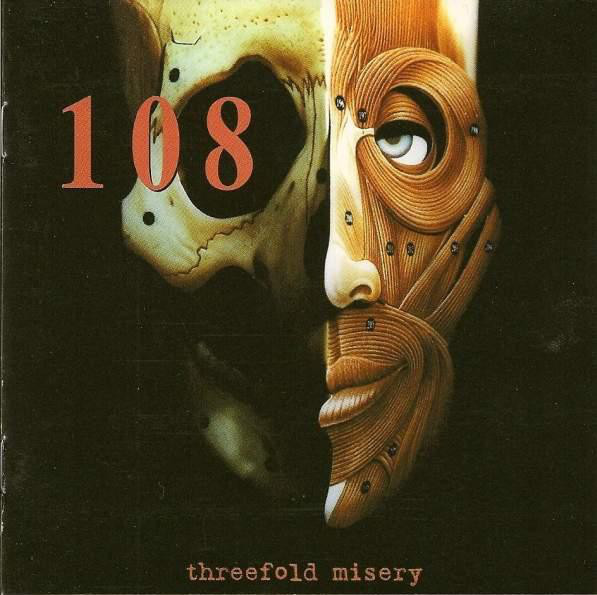
Formed from the ashes of the Zack De La Rocha-fronted project Inside Out, 108 stormed the scene in the early ‘90s armed with their own brand of “Krishna Consciousness.”
While they gained a following rather quickly with their NYHC staples Holyname and Songs of Separation, it wasn’t until 1996’s criminally overlooked opus Threefold Misery where they truly seemed to find their own sound fully separated from their Krishna contemporaries (Shelter or Cro-Mags). This LP showcased 108 at their strongest as they flawlessly initiated a master blend of positivity and brutality.
All killer and no filler here.
59) Morning Again–As Tradition Dies Slowly (1998)
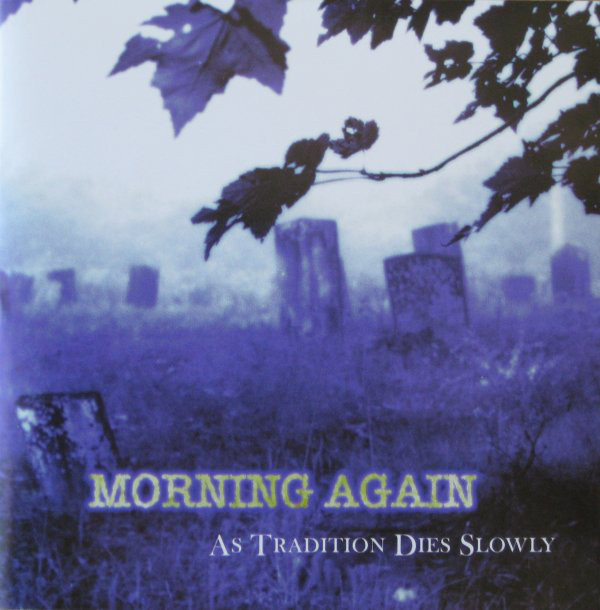
Prior to crafting this list, my firsthand experiences encompassing Florida’s Morning Again was limited to the comical juxtaposition of comparing the intro of “The Martyr” with Earth Crisis’ “Deliverance.” This led me to wrongfully assume the group was simply a rehash of Earth Crisis and it wasn’t until recently that I decided to give this record another go.
It was around thirty seconds into “Stones” that I realized how foolish I was writing off Morning Again’s only proper LP and it only took a few spins of As Tradition Dies Slowly in its entirety for me to realize just how much of a blueprint this record would serve for future waves of the genre.
58) Turmoil-The Process Of (1999)
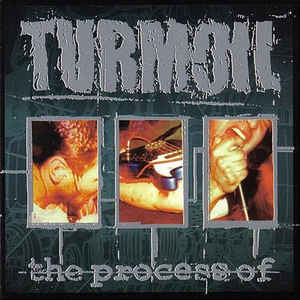
When the Philly-based quintet Turmoil dropped their second LP, I do not think they were even slightly aware of how strong of an influential impact it would serve. The Process Of is a pummeling listen laced with groove and fury and significantly improved production verses their earlier works. It is almost shocking listening to this now and knowing it is a tail-end ‘90’s release as it could be comfortably placed alongside almost any modern band tackling the genre. This record manages to be absolutely crushing without taking itself too seriously and its unique sense of personality has allowed it to age like fine wine.
57) Vision of Disorder–Imprint (1998)
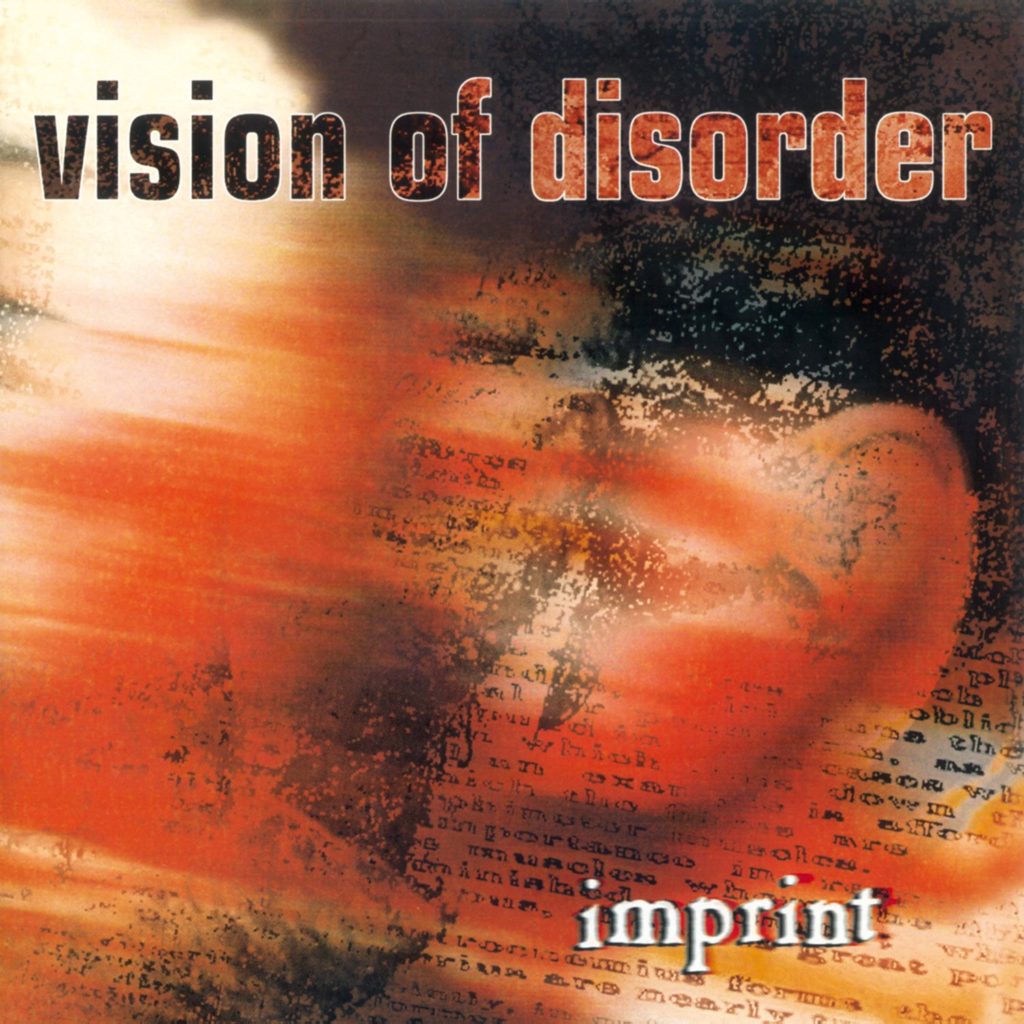
Known for mixing the dominant stylistic approach of the classic New York brand style of hardcore with a splash of groovy thrash on their self-titled debut, Long Island legends Vision of Disorder turned things up a notch on their sophomore effort. While many will argue which is the superior record, there is no denying the writing approach shifted drastically making these conflicting opinions totally understandable.
Imprint showcased the band transferring their groove away from their NYHC roots and went all in on the riffage on this one. Tim William’s vocal performance here may be off putting to casual Metalcore fans but after you a few spins, the listener will easily see just how well it meshes with the sludgy, southern fried vibes this album channels. It is also worth mentioning, Phil Ansemlo of Pantera fame provides guest vocals on “By the River” which not only compliments the stylistic shift between the two LPs, but almost feels like a perfectly constructed time capsule of its era.
56) Unearth-Stings of Conscience (2001)
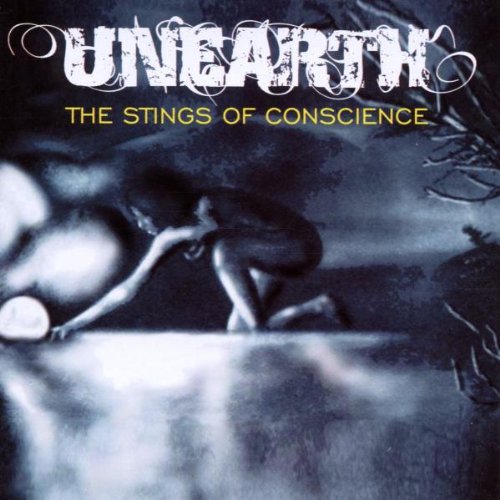
I won’t bother arguing if this is the opus of Unearth’s catalog because I truthfully wouldn’t have a leg to stand on. However, I will argue until my face turns blue that their overlooked debut fits the Metalcore description more strongly than anything else they have released.
With the exception of the Code Orange-pioneered 2010s revival, each wave of what is referred to as Metalcore has felt progressively more out of touch with its hardcore elements and I believe Unearth to be a top contender of one of those waves. Stings of Conscience exemplifies a cohesive relationship between the raw abrasiveness of hardcore and the technicality and ferocity of metal in a way you just don’t hear in The Oncoming Storm or III: In the Eyes of Fire. While diving into their future releases it becomes clear where their strengths were from the beginning, but there is undeniably something about this record that just feels true to what Metalcore should be. I believe the song below can make my point better than I am capable of verbally. You decide.
55) skycamefalling–10.21 (2000)
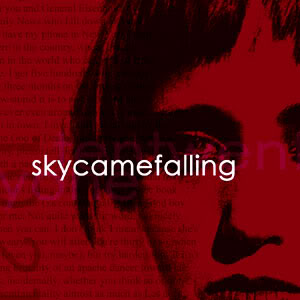
skycamefalling is yet another criminally unappreciated Metalcore act hailing from Long Island. Their first and only proper LP illustrated a very different, emotional approach to the genre than their previously mentioned neighbors (Vision of Disorder).
Following the cues of Poison the Well and Hopesfall, skycamefalling utilized their songwriting strengths to illustrate the melodic beauty of emotional pain in a genre mostly dominated by the virile tendencies of acts such as Hatebreed and Merauder. For better or for worse, this beautiful gem of a record helped paved the way for heart-on-your-sleeve bands such as Underoath and From Autumn to Ashes.
54) Living Sacrifice-Reborn (1997)
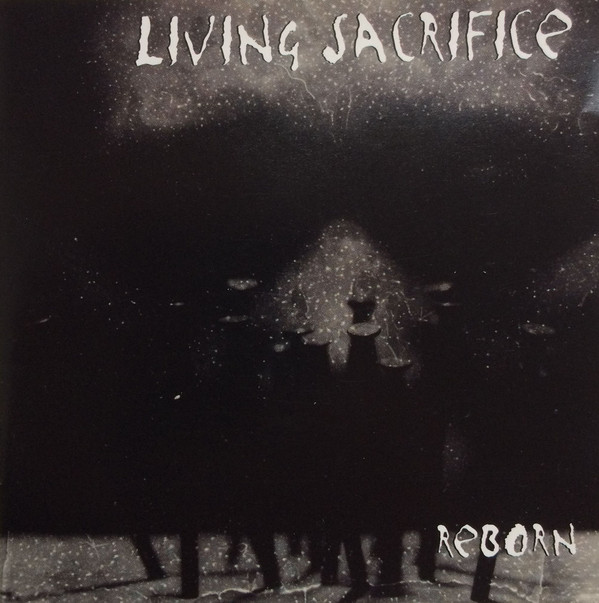
After completing a trilogy of mostly forgotten Death/Thrash records in the early ‘90’s, the un-apologetically spiritual quartet known as Living Sacrifice stormed back into the scene in the later part of the decade fully “reborn” and freshly signed to Solid State records.
In an era where the popularity of Nu Metal was beginning to skyrocket, the Little Rock, Arkansas-based collective turned heads with a completely revitalized lineup and sound that implemented a strongly groove-based take on the Metalcore genre. The guitar tone achieved here is absolutely pummeling and impossible to not headbang to regardless of your beliefs. What blows my mind the most with this LP is that this is their most devastatingly heavy offering despite following up a fully fledged Death Metal record (Inhabit).
With Reborn, Living Sacrifice keeps a heavy footing placed in their signature Thrash Metal sound but instead of relying on the tendencies of the more extreme metal aspects of the genre to hone in on their brutality, they crafted their heaviest and most accessible record in their career no one could have expected and managed to leave a permanent impression in the legacy of Metalcore even the most passionate of atheists cannot deny.
53) Everytime I Die–Hot Damn! (2003)
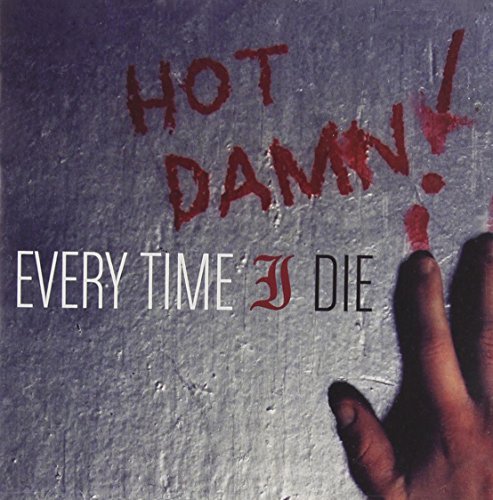
Buffalo-based Everytime I Die is certainly one of the few bands on this list that requires no introduction. In the past two decades, their career, sound, and fan base has undeniably continued to evolve and expand. With this in mind, I will provide the same argument with Keith Buckley and the boys that I did with Unearth. This may not be the group’s strongest effort, but it is the most deserving of a spot on this list so let’s turn the clock back to 2003 really quick and reflect.
The early 2000’s took hold of Vision of Disorder’s Imprint as we began seeing Metalcore bands (such as Nora, Norma Jean and 18 Visions) inject southern rock sensibilities into the Metalcore recipe. Hot Damn! portrayed this in a way that allowed the tumultuous precision of more technical acts such as Converge or The Dillinger Escape Plan to seamlessly blend with southern rock attitude. Buckley’s lyrical narrative seems to border between cinematic, crime narratives and wanting to party and-to be honest-not much has changed.
Hot Damn! paved the path for a successful, well-deserved career and remains a staple in the modern landscape of the bold genre combination that has since become commonplace.
52) The Banner–Frailty (2008)

The earlier releases from The Banner exemplified a baton passing of sorts between them and their New Jersey elders in Nora. Stylistically, Posthumous and Each Breath Haunted seemed very on point with the soundscapes and the general attitude and lyrical approach found within Dreamers and Deadman and thus encompassed a defined sound for 2000’s era New Jersey hardcore.This all changed when their third LP dropped towards the curtain call of the decade.
Frailty came out of left field and to this day feels like it was crafted by an entirely different band. While Each Breath Haunted toyed with a darker metallic edge in its implementation of horror-themed punk, this record went all in and stands today as one of the heaviest records of the 2000s.
Seemingly, the influence here seems to be more intertwined with the “Holy Terror” sounds of Cleveland legends like Integrity or Ringworm as it boasts imagery of pure evil and a guitar tone that felt like a slab of concrete smashing the listener in the face with each chord strummed.
If you missed out on Frailty when it dropped, it’s not too late.
51) August Burns Red–Thrill Seeker (2005)
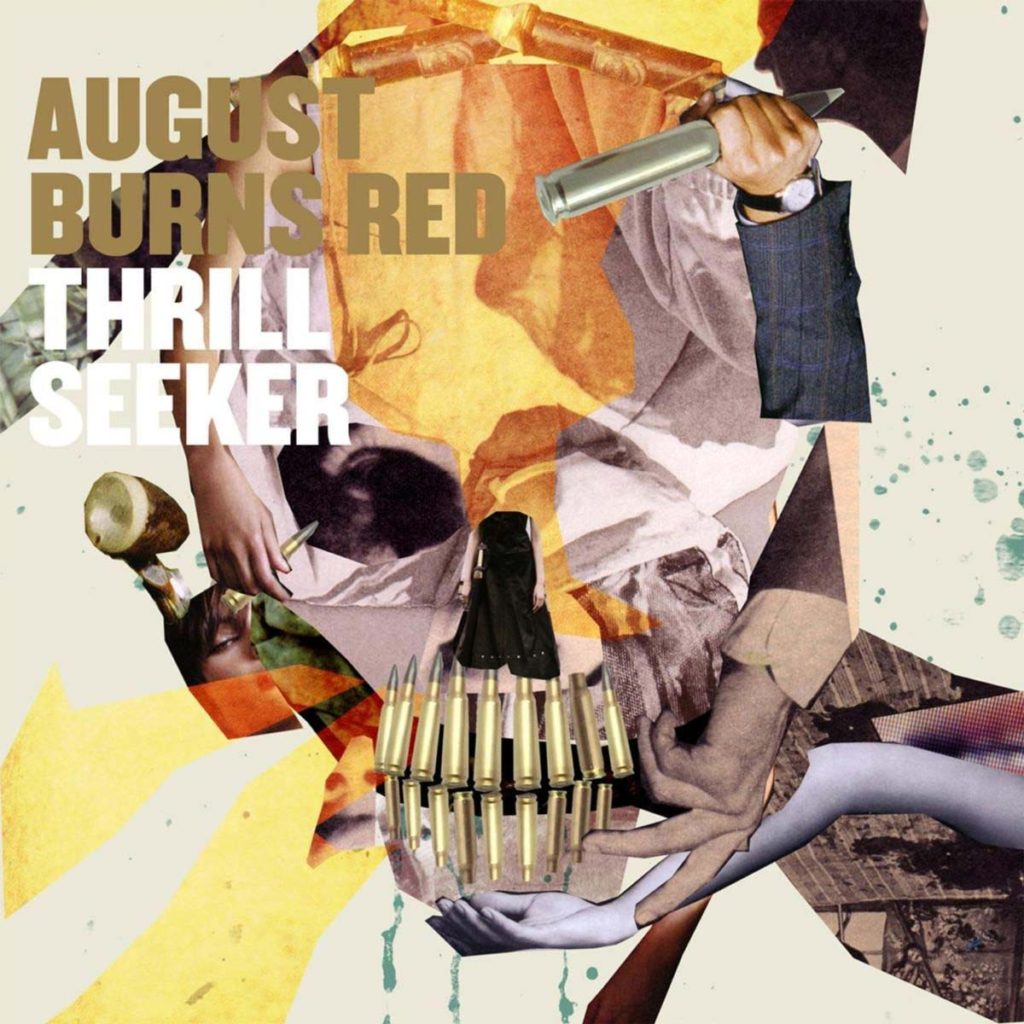
Another well known band in this list, but sadly not necessarily a well-known album (EDIT: I had written this before they announced a front to back virtual performance of this record this year).
Hailing from Lancaster, Pennsylvania, August Burns Red has coasted throughout their generously long career with a very “if it ain’t broke, don’t fix it” mentality. With the release of their sophomore LP Messengers in 2007, ABR introduced a songwriting formula alongside their new vocalist (at the time) Jake Luhrs, that has survived the test of time even up until this year’s Guardians. This formula has been tweaked and refined here and there throughout the years, but ABR has always sounded like ABR and to me, that is a very impressive feat giving the shifts the music industry has undergone throughout the course of their career.
Thrill Seeker unfortunately seems to be left in the forgotten abyss of obscurity even among the most die hard of fans. This truly is a shame and if you recognize yourself as a fan of the group and have skipped over this gem, I strongly advise you to reconsider.
Released in 2005, this record is the sole entry into their catalogue to be produced by well-known Killswitch Engage guitarist Adam Dutkiewicz and his fingerprints are all over this thing. From the very moment “Your Little Suburbia is in Ruins” begins, it becomes very apparent to the listener that their eardrums have just signed up for a 45 minute roller coaster ride. Imagine if Opposite of December era Poison the Well was injected with a plethora of steroids. The drum and guitar work here is exhilarating to say the least and the writing finds a way to implement the use of breakdowns in a way that is far less formulaic and predictable than later releases.
I do not put this release on a pedestal out of any loyalty to original vocalist Josh McManness because truthfully, him and Luhrs sound almost the same. To me, the strength of ABR has always been the dynamic between guitarist J.B. Brubaker and drummer Matthew Greiner and I just personally think this dynamic shines here the most. While their overall skill sets have undeniably strengthened over the course of their career, I firmly believe this to be the shining moment of their songwriting abilities. As if they have something to prove to the world and by the time Messengers dropped, it had already been proven. Listen below and see if you agree.
50) Rorschach–Remain Sedate (1990)
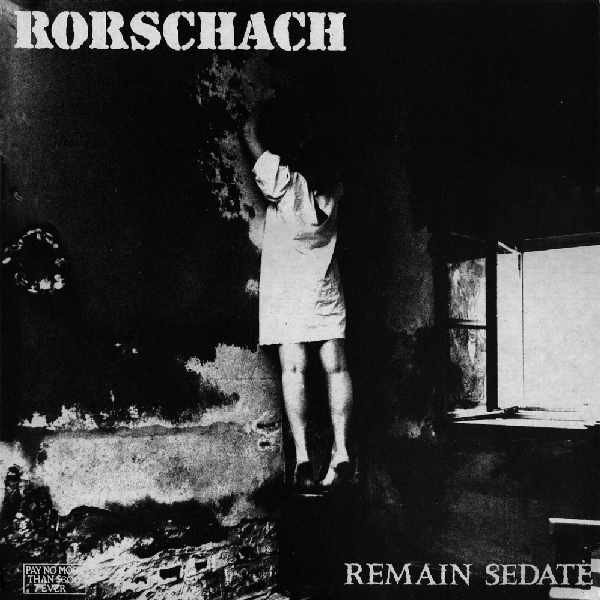
Rorschach is one of those bands Metalcore fans have “heard of” but have not necessarily “heard.”
Known mostly as a big influence for Converge (we’ll get to that later) and for spawning Deadguy and Kiss It Goodbye, this New Jersey-based five piece solidified a legendary template in their short career with two drastically different LPs that each uniquely serve as foundations for what the genre would become. We’ll start by tackling their debut LP Remain Sedate (consider this a hint for later on the list).
Heavily entrenched in the styles of both powerviolence and crust punk, this LP is a short burst of agonizing horror. The raw blend of metal and hardcore punk is fully illustrated in its most primitive form and its clear upon first listen that this brief collection of tortuous fury would help pave the way of the sounds to come.
49) Advent–Naked & Cold (2009)
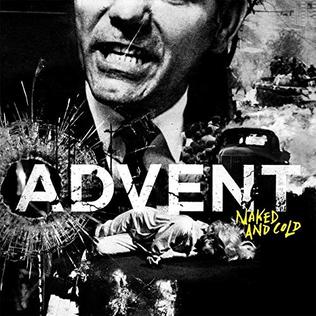
The biggest sin Naked & Cold is guilty of is its release date.
Following the funeral of legendary North Carolina post hardcore act Beloved, drummer/”unclean” vocalist Joe Musten began fronting a new, spiritually-minded project called Advent. This project channelled a throwback sound to the early eras of Metalcore and most noticeably channeled the previously mentioned Turmoil in their 2008 debut LP Remove the Earth. This debut certainly illustrated a sound I appreciated but unfortunately just seemed to wear its influences too tightly on its sleeves for it to have any sort of impact and I felt the same way upon revisiting it recently.
Then, a year later, Naked & Cold came and absolutely pummeled the band’s predecessors into submission. While it’s hard to pinpoint exactly when the recent revival of Metalcore started, many contribute this to acts such as Code Orange when they dropped I Am King or Harm’s Way when they dropped Isolation. I personally trace it back to this beast of a record.
The production and the devastatingly crushing songwriting allows Advent’s sophomore LP to be comfortably ranked amongst its influences instead of just seeming like a front to back homage to an era they were too young to participate in. Quite possibly one of the strongest releases from Solid State Records.
48) All Out War–For Those Who Were Crucified (1998)
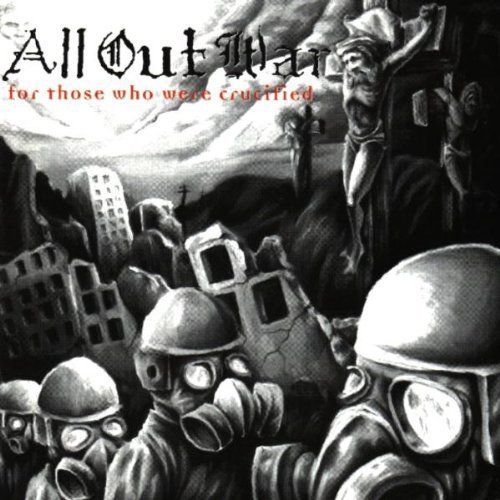
Following the demise of A.W.O.L, All Out War formed to become another New York band that this list could not have done without. For Those Who Were Crucified is a horrifyingly malevolent listen and despite having a familiar instrumental framework as their contemporaries, vocalist Mike Score seemed more hyper-focused on expressing his darkest and most tormented thoughts regarding humanity than he did about hardcore saving his life and overcoming obstacles with positive outlooks.
While this record did not necessarily feature anything groundbreaking at the time, it provided an evil twist on a familiar sound that All Out War had mastered inside and out.
47) Eighteen Visions–Until the Ink Runs Out (2000)
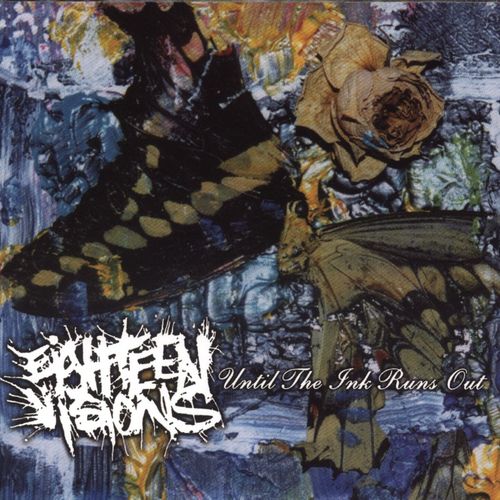
Prior to the eventual transformation into a Papa Roach clone of sorts, Orange County’s Eighteen Visions helped birth a lot of Metalcore’s worst trends, but I speak for many fans of the genre when I say they are deserving of forgiveness.
Until the Ink Runs Out helped the group pioneer what many call “Fashioncore” (whatever that means) and despite being released three years before the launch of MySpace, looks and feels like a MySpace era record. From the exhaustingly long and goofy song titles to the overuse of film samples to the hyper sexualized lyricism, this record was just a few years ahead of its time.
I suppose I should now focus my attention on the record’s redeeming qualities and why it ranks above other albums I have spoken so highly about:
It’s heavy. Like REALLY heavy.
The juxtaposition of the band’s silly presentation and its unmatched brutality is simply the reason this record holds up. While they would continue their career with a more melodic approach, this record laid down the framework for bands like The Chariot and On Broken Wings.
If you have ever avoided this LP due to the warning signs I have pointed out, (even though I also love Vanity), Until the Ink Runs Out is the only Eighteen Visions record I can comfortably recommend to any fan of the genre as it is the only release in their catalogue that properly balanced the ridiculousness of their aesthetic and their crushing take on combining Metal and Hardcore.
46) Harvest–Living with a God Complex (1997)
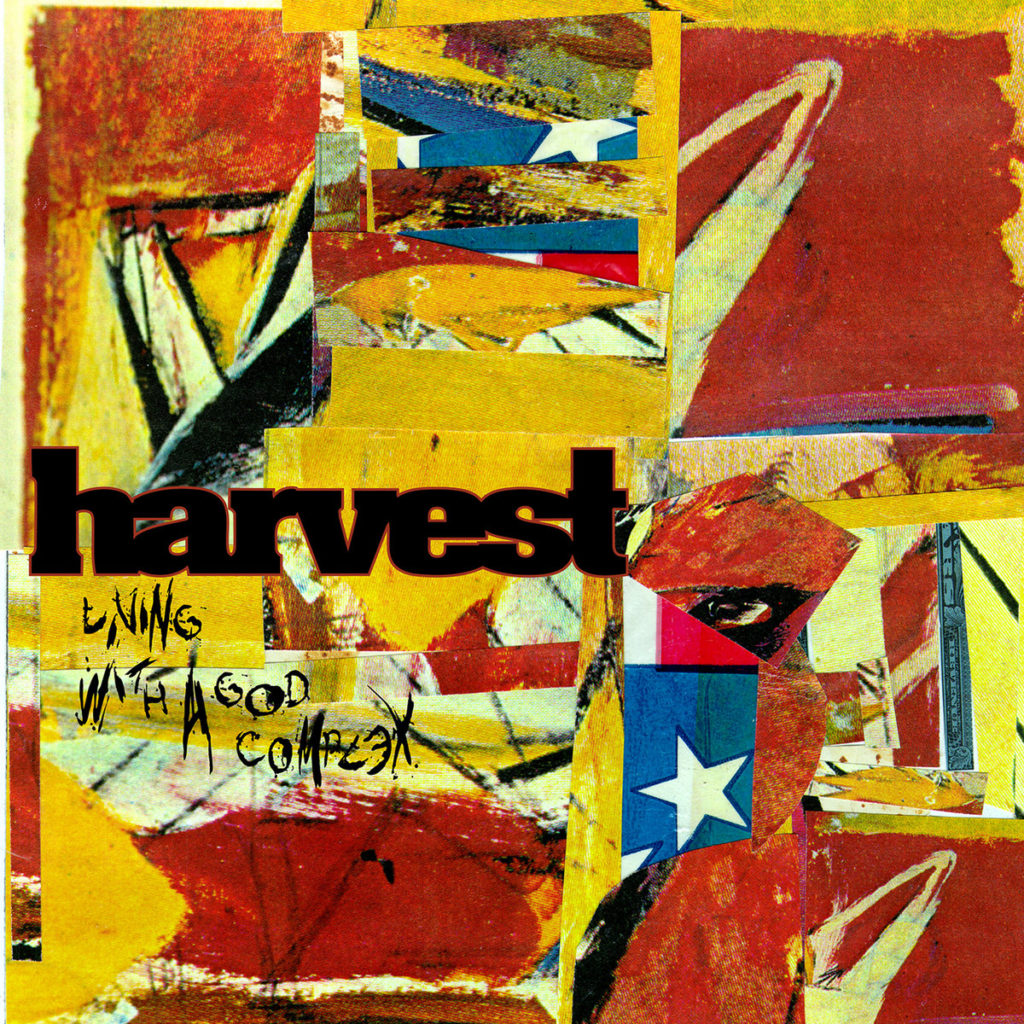
Minnesota’s Harvest are sadly another addition to the unsung heroes of the genre. 1997 saw the year of release to their only proper LP which demonstrated perhaps the most “tough” take on the genre to date. Perhaps overshadowed by Hatebreed’s debut released the same year, Living with a God Complex allowed toe-tapping groove to shake hands with passion-fueled brutality in a way that modern bands simply cannot even fathom attempting to mimic. While I am glad this recent revival has boosted their recognition, this record should be ranked as a classic.
45) Bloodlet–The Seraphim Fall (1998)
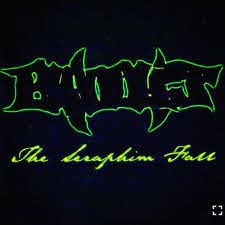
Despite the puzzling album art, I promise this record does not sound like Limp Bizkit.
Following their 1996 debut Entheogen, this Floridian quintet became known for implementing a brand of evil-injected hardcore similar to the likes of Disembodied and Damnation A.D. Despite my absolute adoration to the previous two bands listed, Entheogen seemed like it was missing something. All of the elements I look for when visiting the genre were present, but it just felt stripped down, stale, and at times a chore to listen to. Their sophomore LP, on the other hand, rightfully earned its place as a Victory Records Golden Age staple.
The Seraphim Fall is a bizarre, evil roller coaster ride of a record injected with elements of Doom and Sludge metal that seemed to fill in the exact missing puzzle pieces I felt their debut lacked. With surprisingly long track lengths and unorthodox instrumentation (I think I remember hearing trumpets for some reason?), everything about this release seemed like a well-oiled, cohesive machine that pummels your eardrums with unexpected surprises and production that feels similar to an early Electric Wizard record. Definitely worth a spin if you are unfamiliar.
44) Coalesce–Give Them Rope (1997)
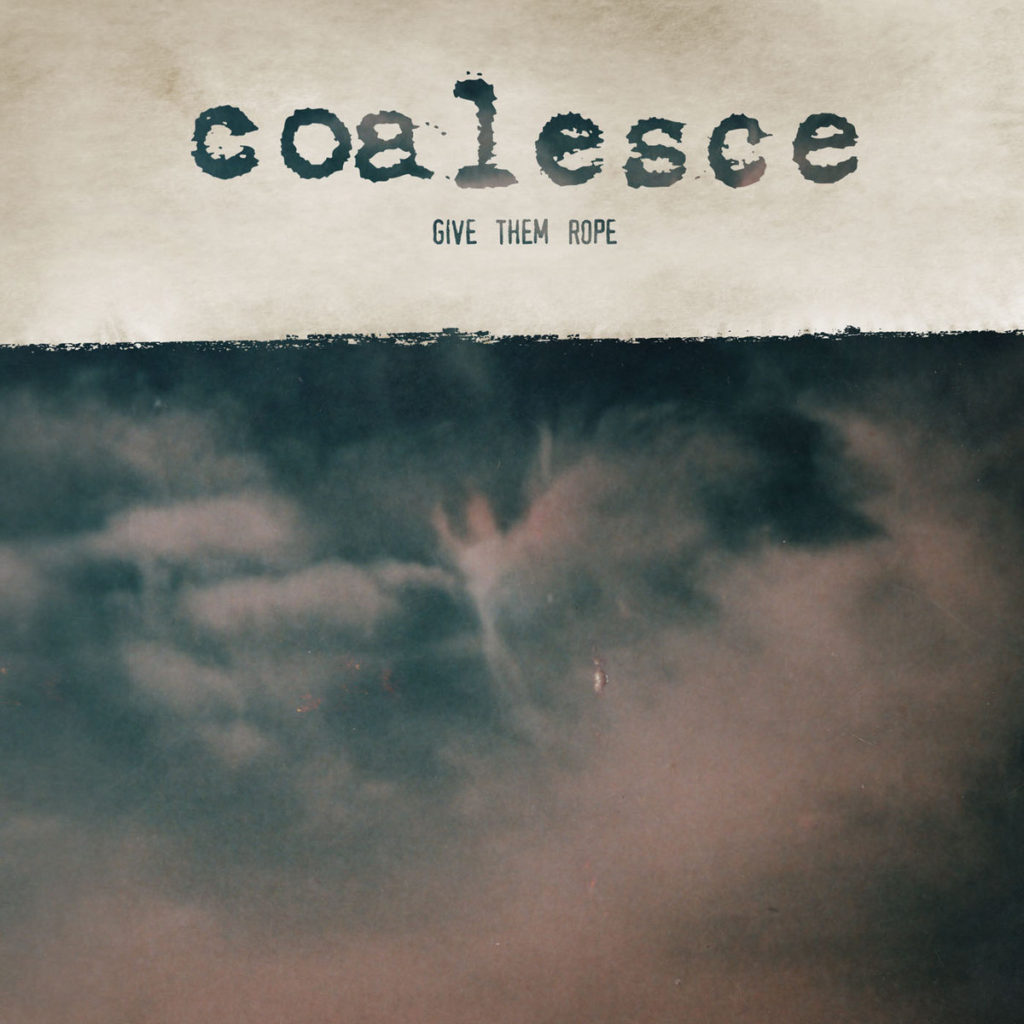
As you progress through this list, it will become very obvious that Missouri quartet Coalesce is one of my all time favorite bands. The only reason this album doesn’t rank higher is because truthfully, it overstays its welcome.
After a string of “7’s and splits, Coalesce slowly morphed from a very tight, heavy hardcore band to a ferocious, sonic beast. Their debut showcased this newly formed sound with vocalist Sean Ingram’s revamped guttural, ranty approach and a balance of complex mathy instrumentation filled with odd time signatures comparable to that of Dillinger Escape Plan with hard-hitting sludge.
However, as their career ventured further into the close of the decade, it became clear that this songwriting approach worked better when implemented into short, ferocious bursts which is why this is their only full length from this era that passes the 25 minute mark.
While many seem quick to compare Norma Jean’s Bless the Martyr, Kiss the Child to the accomplishments of Botch, I would be more quick to point out those similarities to this record.
43) Underoath–Define the Great Line (2006)
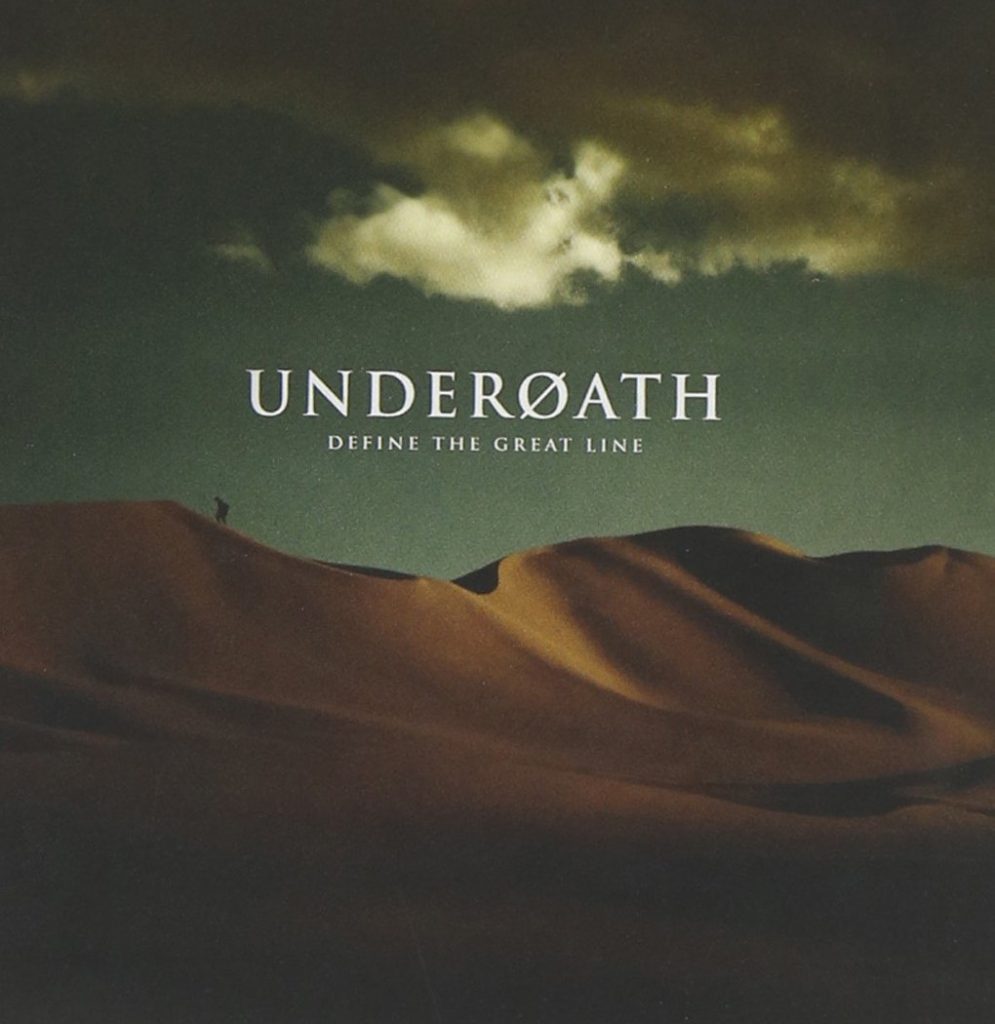
With the departure of original vocalist Dallas Taylor and the explosive success of They’re Only Chasing Safety, most fans would come to expect (if there was any familiarity to begin with) that Tampa, Florida’s Underoath had closed the book on their relationship to metal altogether. It had seemed their channeling of bands such as Hopesfall and Poison the Well had reached an absolute apex when blended with more pop-oriented sensibilities of the era’s milestone acts (such as Taking Back Sunday, The Used, and Brand New). The revitalized sound of the newly formed sextet made excellent use of the call and response vocal dynamic between Aaron Gillespie and their new frontman Spencer Chamberlain as well as the electronic mastery of keyboardist Chris Dudley. Due to the success of this record and the reformed lineup, the only logical step would be to continue in this pop punk direction and eliminate any remaining ties to their less accessible, darker edge.
In 2006, Underoath decided to completely defy expectations with Define the Great Line. With Killswitch’s Adam D at the helm of this one, it would be foolish to expect this record to NOT be crushingly heavy. The focal point of their writing switched from powerful choruses to invoking a sense of atmosphere which is where longtime member Chris Dudley truly began to show his strengths. Complementing the guitarwork seemingly now inspired by post metal acts such as Cult of Luna or Neurosis, Dudley truly let his skillset shine adding vital texture and dark ambiance to each track.
The vocal dynamic between the two frontmen remained as strong as ever with Gillepsie effectively shining in the moments that called for it and Chamberlain showcasing his true vocal approach more akin to the powerful presence in his previous band This Runs Through.
Define The Great Line may have not been the record that allowed for Underoath to headline stadiums as many would have expected, but it is the record that allowed them to etch their legacy in stone instead of being another blip on the mid 2000s, Hot Topic-themed screen.
42) Starkweather–Crossbearer (1992)

In the same vein as Rorshach, Philadelphia’s Starkweather is another staple of the primitive era of Metalcore that many have “heard of” but have not “heard.” It is almost silly to pigeonhole this bizarre collective as Metalcore because the amount of genres blended in each of their releases far surpasses a simple label and they would most likely detest the comparison. However, for the sake of simplicity, I recognize some of their works as being a cross between metal and hardcore so we will continue with that theme and ignore the nuances. Crossbearer is probably one of the most challenging listens on this list. It demands time and digestion the genre usually does not require but the results are beyond rewarding.
One of the biggest obstacles separating casual Metalcore fans from the goal of “understanding” Starkweather lies in the unorthodox vocal approach of frontman Rennie Resmini. The tortuous shrieks and ugly cleans are certainly not accessible by any means, but rather, serve as an instrument in itself adding to the chaos and horror found in the instrumentation (think Bannon on Jane Doe).
When comparing Crossbearer to the future efforts in the band’s catalogue, the instrumentation feels like a template for what’s to come. The guitarwork was comparably more simplistic emulating thrash bands of the era, but the sprawling track lengths and unexpected segues and repetitive sections certainly evolved alongside the bands career. The highlight on Starkweather’s debut falls entirely on Resmini’s unique, abrasive style that would influence many vocalists within the genre over the decades. Future releases would find instrumentation catching up, but more on that later.
41) Disembodied- Diablerie(1997)
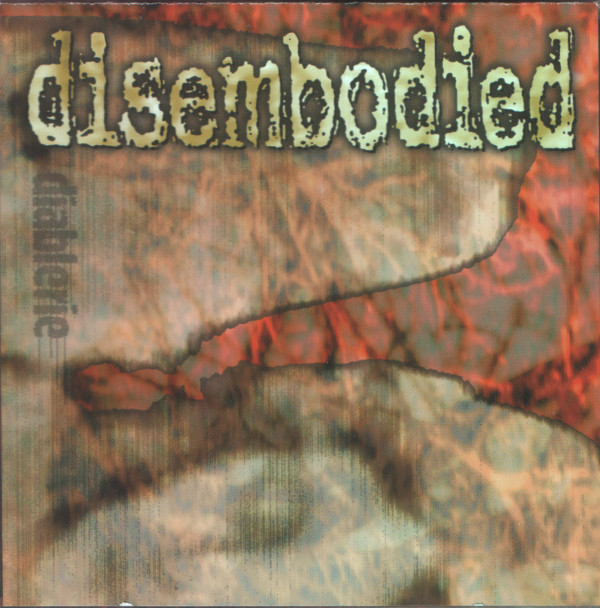
Do you ever find yourself wondering what Poison the Well’s landmark LP Opposite of December would sound like if it was re-imagined by Korn infused with the power of Satan? Well luckily, Disembodied’s debut LP answers that question quite well.
Diablerie implements horrifying soundscapes of thick, sludgy guitar work reminiscent of the rise of nu metal’s popularity in the mid to late ‘90s with track after track of pounding, bouncy angst. Vocalist Aaron Weseman offers a strong performance shifting between spoken word passages that hinder on sorrow and uncertainty and demonic yells that feel like a demon released from a cage.
While this may not be their strongest work (in my edgy opinion) due to muffled, tinny production that would be corrected with future releases, Diablerie left a very strong impression in the genre’s sound that would be explored by future trendsetters such as Norma Jean and Code Orange.
40) Snapcase–Progression Through Unlearning (1997)
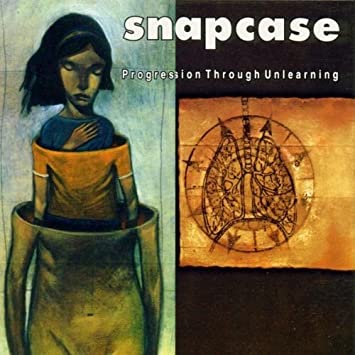
When examining the career surrounding Buffalo, New York’s Snapcase, most agree they stuck out like a sore thumb in the hardcore scene and never fully committed to one sound or style. Only the five piece’s earliest efforts seem to reflect what I would recognize as “Metalcore” so while I will not commit to claiming this as the strongest Snapcase release, I will comfortably proclaim this to be the vital entry to the band’s catalog in conjunction with the discussed genre in this ole list of mine.
Snapcase’s sophomore LP seemingly latched upon the same groove-based brutality of the nu metal genre shared by the above contender, but unleashed its fury in a different direction. Unlike Diablerie, Progression Through Unlearning channeled a more punk rock approach implementing faster tempos and more political based lyricism. There is a whole lot of rage being unleashed here and through its catchy, melodic presentation, this LP stands the test of time as one of the angriest yet most fun albums the genre has to offer.
39) The Red Chord–Fused Together in Revolving Doors (2002)
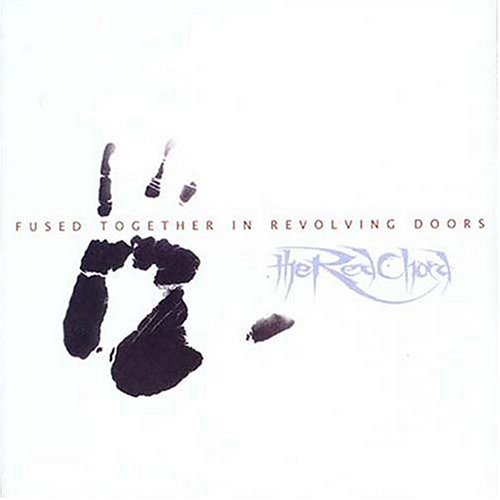
The Massachusetts based quartet known as The Red Chord are best known as the well respected technical death metal/grind act that dropped a string of releases on Metal Blade Records in the mid 2000’s. Here we observe their criminally overlooked debut LP which set a completely different tone than their releases to follow.
Fused boasts vast, complex instrumentation that illustrates the harmonious nature of grindcore and jazz (similar to The Dillinger Escape Plan’s Calculating Infinity). Each track shows a healthy marriage of technical precision at blistering speeds with ruthless, bludgeoning brutality.
38) Damnation A.D.–No More Dreams of Happy Endings (1995)
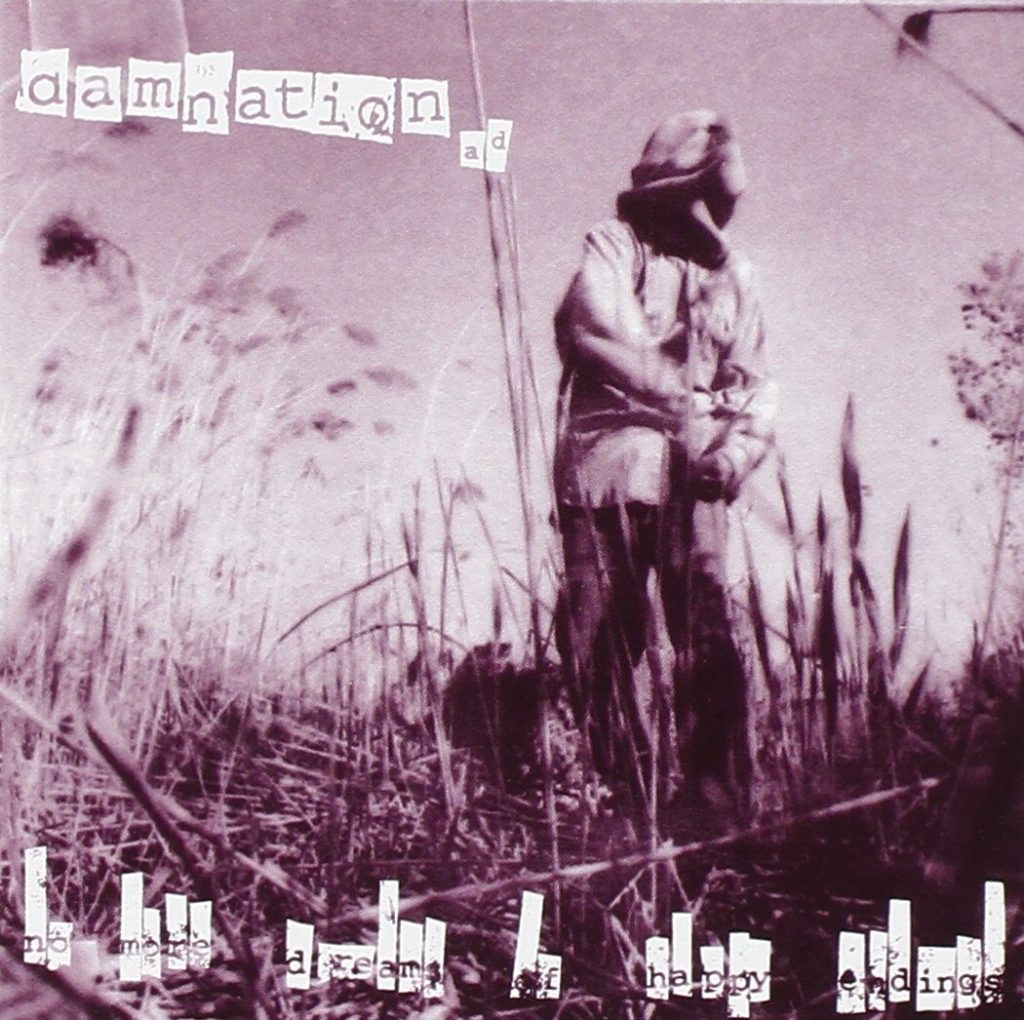
You can’t have a conversation about the ‘90’s golden era of Metalcore and not bring up Washington DC legends Damnation A.D. Before the label was associated with emo and indie rock, No More Dreams of Happy Endings dropped via Jade Tree Records in ‘95 which served as a classic, buried gem of the era. The group’s debut LP fused dirty sludge with raw, abrasive hardcore punk in a way that had not yet been done before.
While Damnation is perhaps better remembered for their more accessible Revelation Records follow up (Kingdom of Lost Souls, 1998), No More Dreams ranks a notch above for stronger songwriting and making good use of bold track lengths with segues and movements that always keep the listener guessing.
37) Earth Crisis–Gomorrah’s Season Ends (1996)
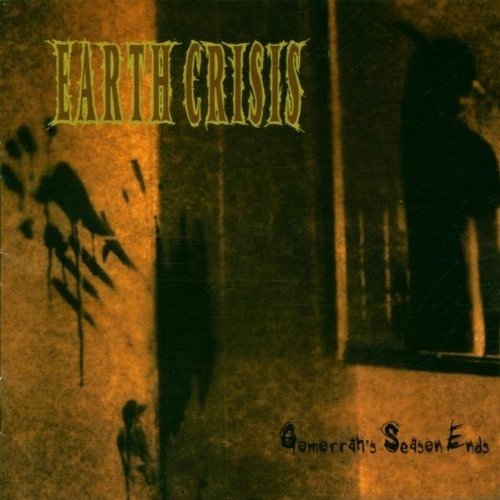
Released only a single year after their classic debut Destroy the Machines, Syracuse, New York-based Vegan Straight Edge veterans Earth Crisis demonstrated a powerful sophomore effort packed with a whole new sound. Where Destroy found the band bludgeoning their audience’s ear drums with slower, commanding tracks with massive, loud, sludge-soaked guitarwork, Gomorrah’s Season Ends possesses more balanced production and groove-oriented, upbeat songwriting.
It’s not just the instrumentation that has received a makeover in the single year that passed between records. Frontman Karl Buchner’s performance on Gomorrah feels more like passionate, ear-piercing demon shrieks than the powerfully deep, vegan straight edge drill sergeant vibes on Destroy.
36) Indecision–Unorthodox (1996)
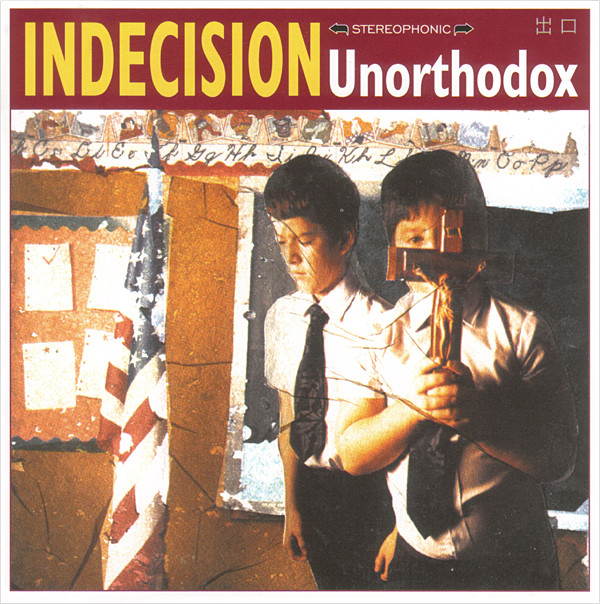
Brooklyn-based Indecision are another legendary act that simply cannot be overlooked when discussing the stones laid for the foundation of the genre of Metalcore as we know it today.
Unorthodox features 15 tracks of adrenaline-pumping fury. Here, the band implemented a classic take on 90’s era NYHC with a metallic edge as it channeled raw anger towards the hypocrisy of organized religion.
35) Misery Signals–Malice of the Magnum Heart (2004)
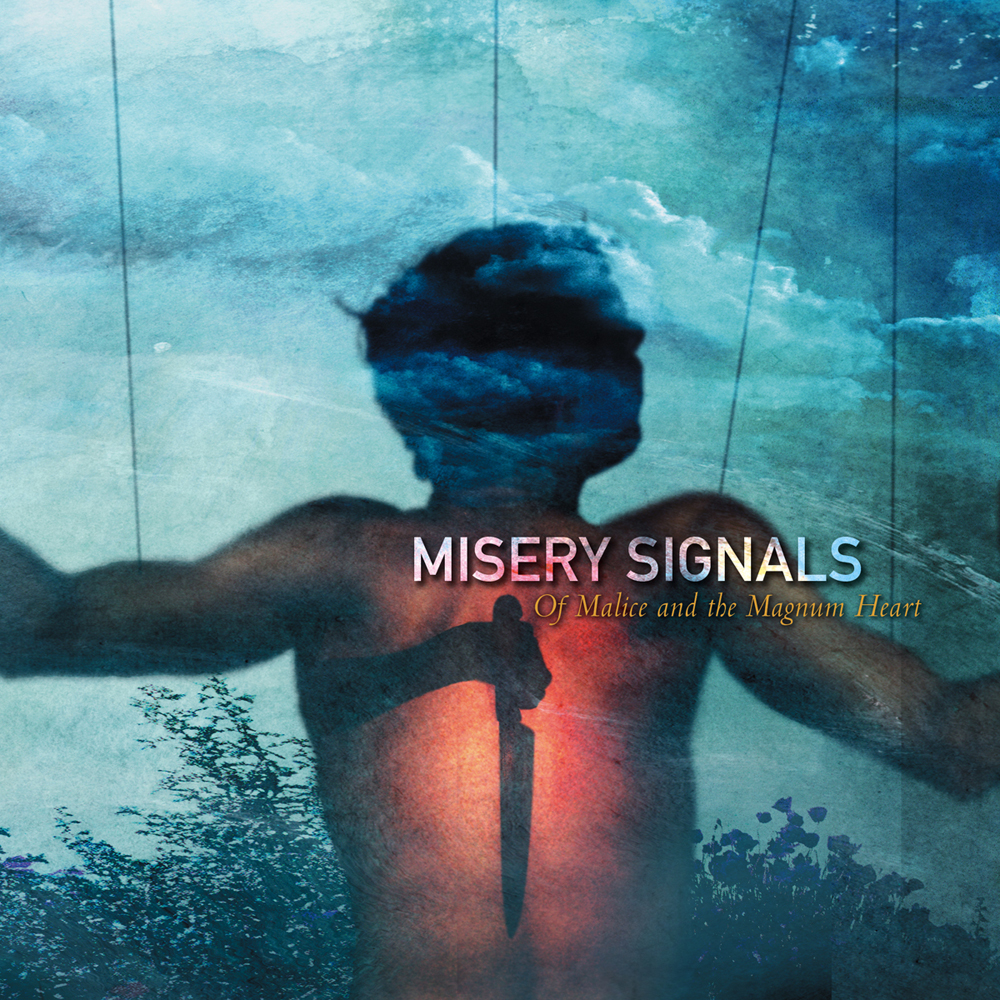
Formed from the ashes of legendary Milwaukee act 7 Angels 7 Plagues, Misery Signals took the early 2000s era of Metalcore head on with their Devin Townsend-produced debut.
Malice saw surprisingly cohesive elements of “prog rock” introduced to the pummeling momentum associated with the genre. Melodic compositions previously explored by 7 Angels 7 Plagues and other contemporaries (such as Shai Hulud or Hopesfall) shake hands with intricate time signatures and pulverizing riffage in a way that had not yet been achieved.
34) Catharsis–Samsara (1997)
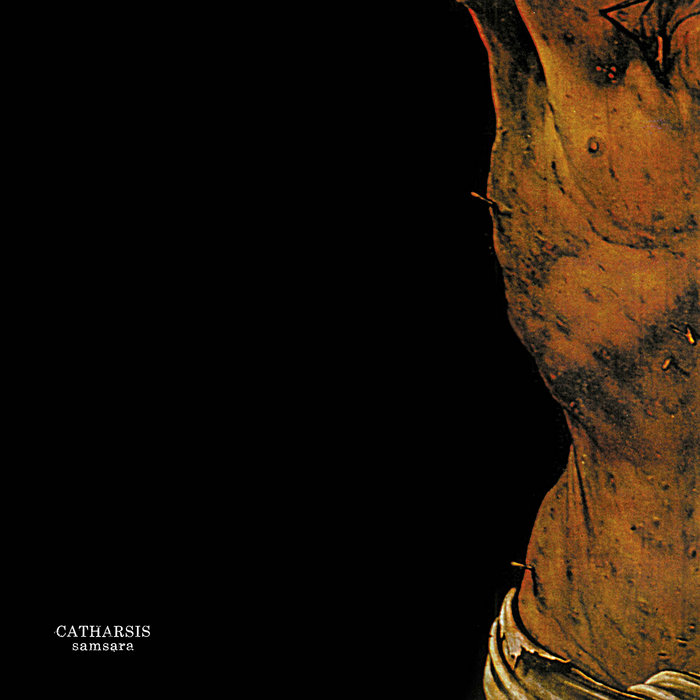
Whenever I give this classic LP a spin, my mind is blown again and again by the release date. Hailing from Greensboro, North Carolina, Catharsis was a band light years ahead of their time as they injected the scene with a new brand of crusty, blast beat-filled hardcore with a thrashy and sludgy metallic edge.
Their 1997 debut Samsara laid the foundation for acts such as Converge and Cursed adding an additional element of doomy sludge to their take on metallic crust punk but infused its own unique injection of rage. Frontman Brian Dingledine delivers a ferocious vocal performance of anarchist poetry that sonically compares to a demonic beast ripping itself free from chained captivity. Each shriek and growl commands the pulverizing percussion and punishing, speedy riffage in a beautifully paced, cohesive fashion without a dull moment on it’s 11 tracks.
The fact I did not take the deep dive into this record that it always deserved until this past year is all the proof I need that Samsara has aged like fine wine. The production does not feel dated in the slightest but rather smooth and balanced in a way most bands of this genre and era had not yet achieved. If you are unfamiliar with this record, I highly recommend changing that.
33) The Chariot-Everything Is Alive, Everything Is Breathing, Nothing Is Dead, and Nothing Is Bleeding (2004)
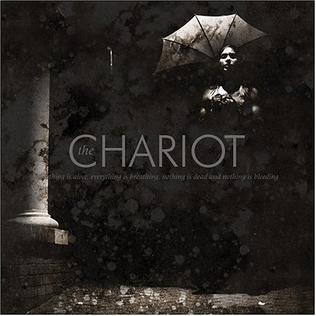
The 2004 debut of Josh Scogin’s post Norma Jean venture The Chariot felt like a sequel (or perhaps a reboot) to Bless the Martyr in many ways. The tactic of recording live without the use of computers, overdubs, or mastering is used again here, but this time in a much more efficient way.
For Bless the Martyr, the raw production elucidated the band’s blemishes and sloppy songwriting and while I admit the record had tons of memorable moments, there was a whole lot of fat trimming that 58 minute run time could have used. For Everything is Alive, the raw production is free of gimmicks and pretentiousness and compliments the band’s sound overall.
The Chariot’s take on sludge-soaked mathcore may share sonic similarities with acts such as Coalesce, Dillinger Escape Plan, or Converge but it is important to understand that with this debut LP, they were not attempting to make any sort of statement of their instrumental skill sets with their production choices. This record actually shares more in common with Eighteen Visions’ Until the Ink in the sense that the songwriting encompasses a very fun, tongue in cheek, carefree approach.
Through a nostalgic lens, I remember when I first got into this record and feeling like the feedback was an instrument in and of itself. There is something refreshing about a band that just doesn’t care and crafts an accidental masterpiece through trial and error. I don’t feel quite this strongly about the remainder of The Chariot’s entries prior to their dissolution in 2013, but I firmly believe Josh Socgin had a vision and the vehicle that achieved it was horse-drawn.
32) Deadguy–Fixation on a Coworker (1995)
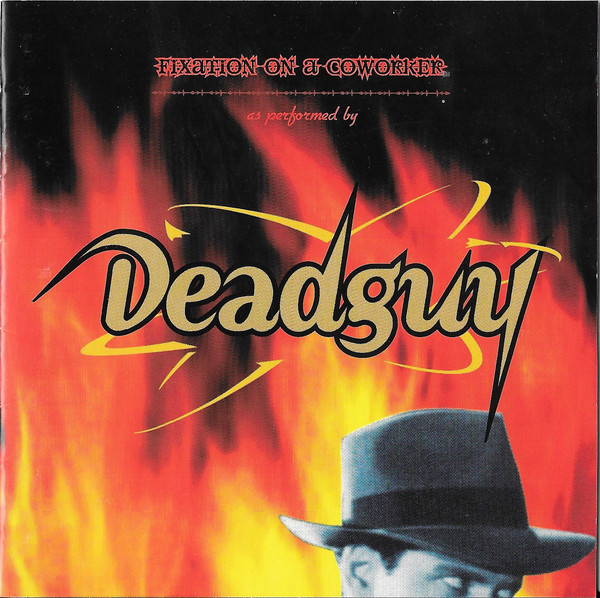
The New Jersey-based collective known as Deadguy used their first and only LP to illustrate a perfect balance between the most rage-fueled elements of both metal and hardcore.
Fixation laid some serious groundwork for the eventual blossom and popularity spike of Metalcore and truly shows how different of a record label Victory has become since the mid ‘90s. From the intense, angry outbursts from frontman Tim Singer to the haunting and punishing riffage, there are a wide range of refreshing takes to the hardcore/metal genre introduced here that are often still implemented by newer, up and coming bands to this day. Don’t sleep on this classic.
31) Zao–Liberate Te Ex Inferis (1999)

Despite gaining a very quick reputation in the mid ‘90’s for an abrasive take on spirituality via injecting Christianity in the hardcore scene, Zao is a band that has gone through numerous periods of complete re-invention. The departure of vocalist Shawn Jonas closed the era of straightforward cries of passion and faith. Daniel Weyandt’s entrance ushered in a more honest portrait of dread and doubt felt both in his vocal style and lyricism.
While many fans point to Where Blood and Fire Bring Rest as being the turning point and opus in the group’s catalogue, the West Virginia-based rotating door of members truly peaked with their fourth LP Liberate Te Ex Inferis. Here, the songwriting matured significantly and the instrumentation featured more of an eerie, structured ambiance that better complimented their new vocalist’s approach.
Despite multiple breakups and somehow numerous more offerings throughout Zao in the two decades that followed, Liberate Te Ex Inferis demonstrated the band in top form. Everything about this record, while not necessarily groundbreaking, felt balanced and well executed. If you are unfamiliar with this particular record from Zao, you are missing out on an absolute staple to the genre’s legacy.
30) Integrity–Systems Overload (1995)
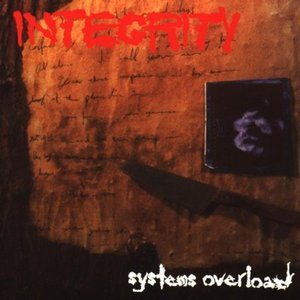
Often overlooked for its muddy production, the sophomore LP from Cleveland’s legendary Integrity needs to be discussed. Released four years after their pioneering debut Those Who Fear Tomorrow (more on that later), Systems Overload is a very different beast that requires more patience and time to click the same way as its predecessor.
From the moment the sludgy intro riff on “Incarnate 365” kicks in and haunting samples are heard floating beneath the guitars in the mix, it becomes clear Integrity has struck back with a vengeance. A couple more tracks inward and it starts to appear as if Integrity has shed its malevolence in favor of a more straight forward hardcore leaning. By the time “Salvation’s Malevolence” kicks in, this assumption is flipped upside down. Some may think this illustrates a form of inconsistency, but my impression has always been that Dwid Hellion and his rotating dark army have uncovered their strengths and weaknesses and base their songwriting on such. The vocals sound more evil, the sludgy riffs hit harder, the solos are faster and more concise, and so on.
Systems is a misunderstood, black sheep sophomore record that deserves time to process. Give it a fair chance and you will likely come to appreciate the progressive steps Integrity made in offering something new to their audience.
29) Underoath–The Changing of Times (2002)
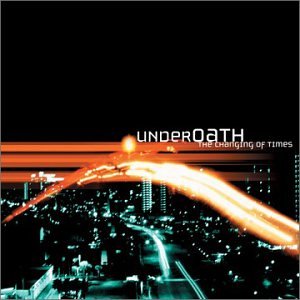
Let it be known when I expressed earlier that Define the Great Line is Underoath’s strongest and inarguably their best work, it doesn’t necessarily mean that it’s my favorite. I understand the whole “Dallas vs. Spencer” thing is the oldest hot take under the sun, but this opinion is not simply based on nostalgia or elitism.
In terms of the evolution of and growth of the Metalcore genre into the mainstream spotlight (and Underoath’s career as a whole) The Changing of Times was a very important record. It was born from a band that had an extremely skilled member roster (especially young Aaron Gillepsie with those lightning speed blast beasts and double-kicks) but suffered from a complete lack of identity, poor and repetitive song structure, and horrendously preachy lyricism. Each member offered moments throughout their early two releases where they truly shined instrumentally, but their writing never justified the bloated track lengths.
Within a year of Takehold Records (Underoath’s previous label) being absorbed by Solid State, Underoath released their third LP The Changing of Times in 2002. This record marked the end of an era (as it was frontman Dallas Taylor’s final release) while simultaneously ushering in a new one.
The Changing of Times introduced lead guitarist Timothy McTague into the mix as well as occasional clean vocal performances from Gillepsie. These two new elements would help preserve the backbone of the band’s sound as the general sonic shift moved away from the depths of metalcore and focused more on melodic harcore tendencies using their metallic past as needed to round out their sound. Keyboardist and Programmer Christopher Dudley truly shined here as he moved away from the symphonic, dirge-like style explored in Cries of the Past to a more upbeat, energizing use of synthesizers accommodating the mood changes in each track.
Lastly, we have Dallas. I will not entertain the idea for a second that Dallas is the more skilled vocalist and lyricist compared to Spencer. However, as the Underoath curtains closed for him, The Changing of Times featured the most honest, passionate performance of his career before switching gears to the Maylene joyride. I still get chills when I hear this man put all of his heart and soul into each screamed syllable in “Alone in December.” While Spencer’s vocal range and ability made him an overall better fit for the band’s later realized trademark sound, there would simply be no They’re Only Chasing Safety or Define the Great Line without this one.
28) Cave In–Until Your Heart Stops (1999)

While fresh on the topic of important and career-changing transition records, let’s switch gears to Cave In’s debut LP. Until Your Heart Stops signaled the drastic change in artistic style from a Boston-based metalcore act to a Boston-based space rock act. When listening to these two different eras isolated before and after the creation of this record, it becomes very difficult to connect the dots. However, this bizarre, 58 minute joyride of hardcore history somehow functions as a cohesive bridge between these polarizing sounds.
After a string of 7”s and splits illustrating a very familiar yet well executed sound in the hardcore scene, Cave In began recording their first full length at their buddy Kurt’s studio (which we now all now know as God City.) A series of lineup shifts during the recording process left the group without a frontman and vocal contributions were offered by various members of bands in their circle (Converge, Agoraphobic Nosebleed, Piebald).
The intensity of metallic hardcore would make its presence known on occasion as Cave In continued down the path of space rock, but the juxtaposition of progressive rock weaving in and out of chaotic, pummeling compositions never operated as harmoniously as it did here.
Know before diving in that the soundscapes encompassing Until Your Heart Stops are unorthodox and strange and hearing Stephen Broadsky’s high pitched voice against the back drop of metallic hardcore passages may be a sound you’re not used to hearing, but this record was a game changer for the genre and cannot be ignored.
27) Coalesce–Functioning on Impatience (1998)

One of the most obvious differences separating Kansas City’s Coalesce debut we discussed earlier with their sophomore LP Functioning on Impatience is the overall runtime and track length. Perhaps the title could be a tongue-in-cheek play on this or perhaps I am overreaching, but like The Chariot debut discussed earlier in this list, more is achieved in a far smaller dose.
The pummeling, sludgy technicality comprising the quartet’s signature sound devastates the ear drums of the listener like an atomic blast with superior production and more nuanced songwriting in its twenty minute run time. Here we see an improved and revised version of Coalesce learning by trial and error to trim fat and deliver a record fully composed of variety between songs that do not bleed into each other. In terms of style, not too much has changed since Give Them Rope other than being refreshingly void of filler. No duds here. Just bangers.
26) Unbroken–Live. Love. Regret. (1994)
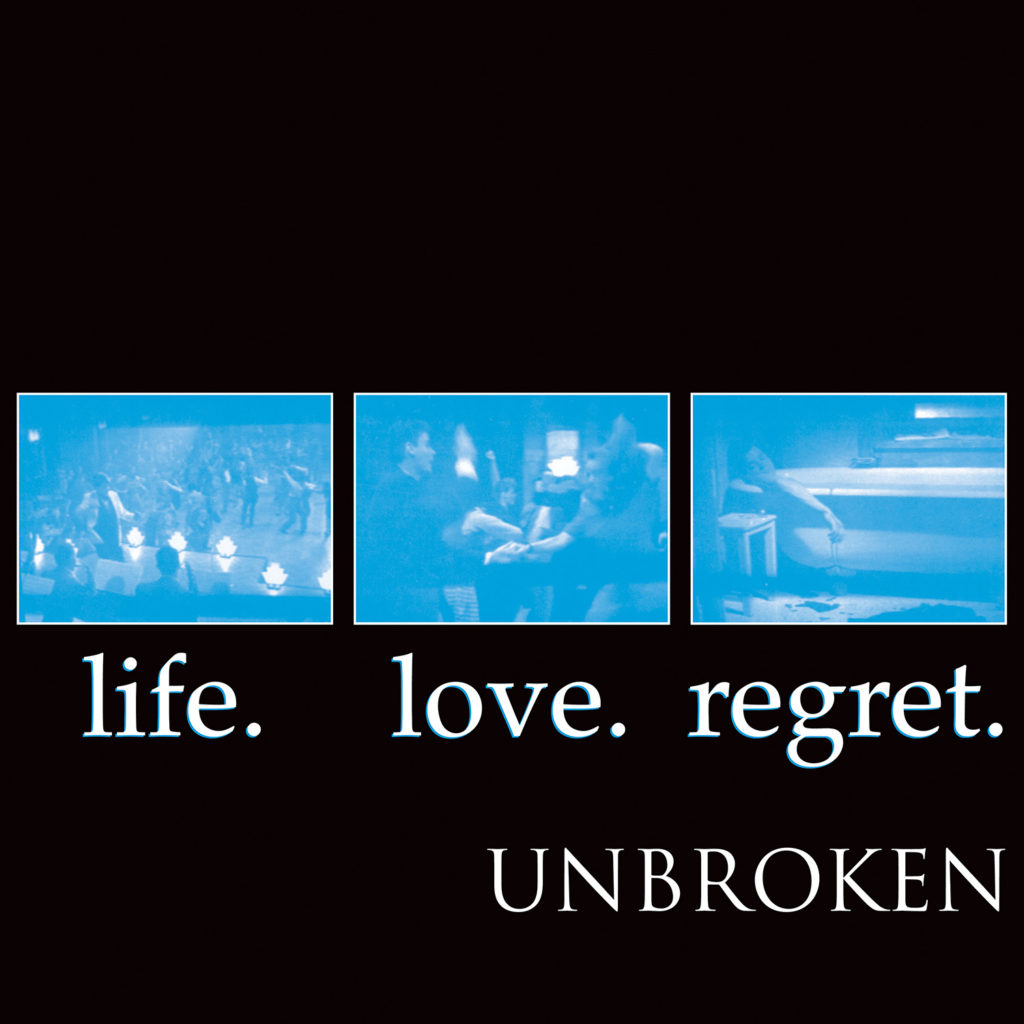
San Diego’s Unbroken emerged from a wave of hardcore where the combination of metallic influences was deemed taboo. As someone whose bias tends to learn in favor with the Metal side of the coin, few bands were able to combine the passion, commitment, and overall DIY attitude into the mold as seamlessly as these guys.
Despite its raw production common to the early ‘90s era, there is something that feels current whenever I throw this on for a spin. There is a sense of familiarity that kicks in from the start of “D4” that lasts until the closing moments of “Curtain” and I feel that stems from just how much Unbroken’s unique Metalcore recipe has been hardwired into the genre’s sound despite their cult status.
Live. Love. Regret. injected a fresh dose of sincerity and positivity into the genre and used its metallic influence to boost just the right amount of aggression and abrasiveness to their message of straight edge and the importance of their community. If you don’t know this classic LP, you will most likely experience the same feeling of familiarity I did.
25) Hopesfall–The Frailty of Words (1999)
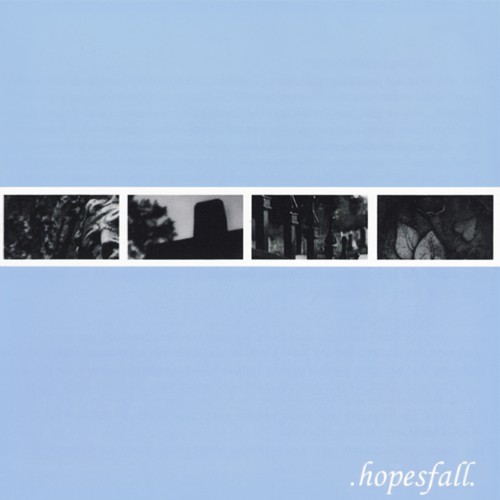
Now THIS is a record that was far beyond it’s time. This spectacular late ‘90s debut LP is very much overlooked within the band’s fan base because they went through two transitions later in their career similar to two different bands previously mentioned. They began channeling a more space rock-influenced sound and shed unclean vocals amidst line-up changes ( like Cave In) and began shedding the preachy Christian label (like Zao). Because of this, The Frailty of Words feels like an entirely different band than the Hopesfall to come and it helped pave a sonic path many bands would soon follow.
This record features a vast array of influences as it successfully combines ferocity, melody, and emotion. There are equal amounts of Hatebreed and Earth Crisis as there is Poison the Well and even Appleseed Cast. Powerfull, crushing rhythm mends with pristine, atmospheric compositions later to be further explored by bands such as Life In Your Way or 7 Angels 7 Plagues.
24) Refused–Songs to Fan the Flames of Discontent (1996)
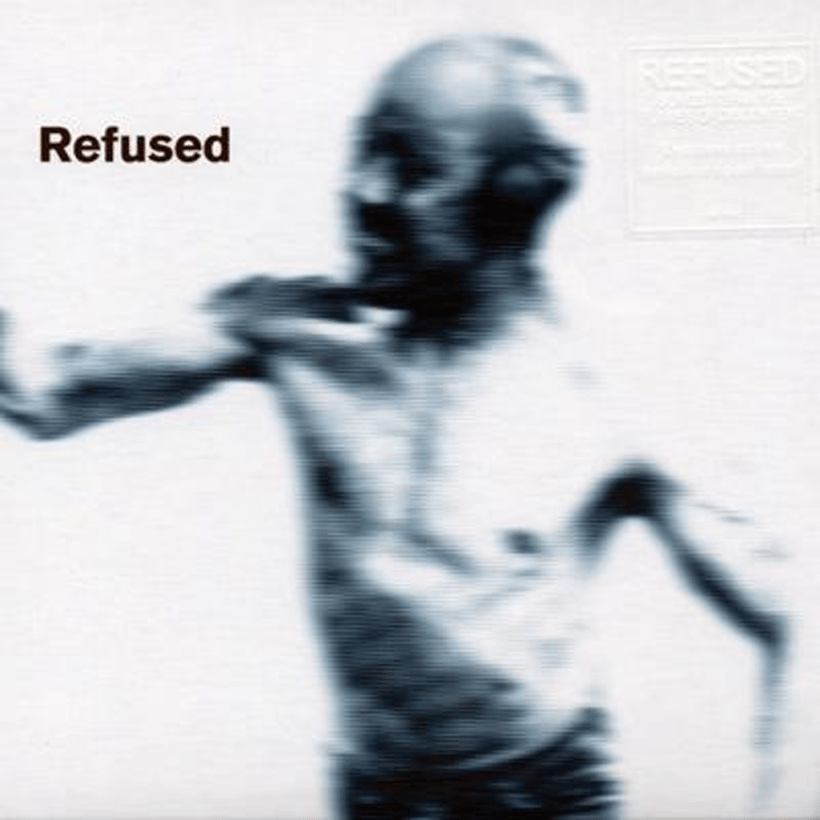
We can argue genre labels all day long, but I firmly believe that legendary Swedish outfit Refused released a Metalcore (or metallic hardcore- if you will) classic in the mid-’90’s. Known mostly for their 1998 opus The Shape of Punk to Come, their sophomore effort released two years prior contained a more stripped dawn, raw and direct sound. However, Songs to Fan the Flames of Discontent was equipped with a metallic edge not found in later releases. Refused injected a refreshing brand of rage that seemingly influenced early 2000’s western acts such as American Nightmare or The Hope Conspiracy with crushing, thrash-driven riffs and alluring, poetic lyricism encompassing anti-capitalism and overall revolution. At its core, this record is the Refused you most likely know and love. Just significantly heavier, faster, and more pissed off.
23) Vision of Disorder–Vision of Disorder (1996)
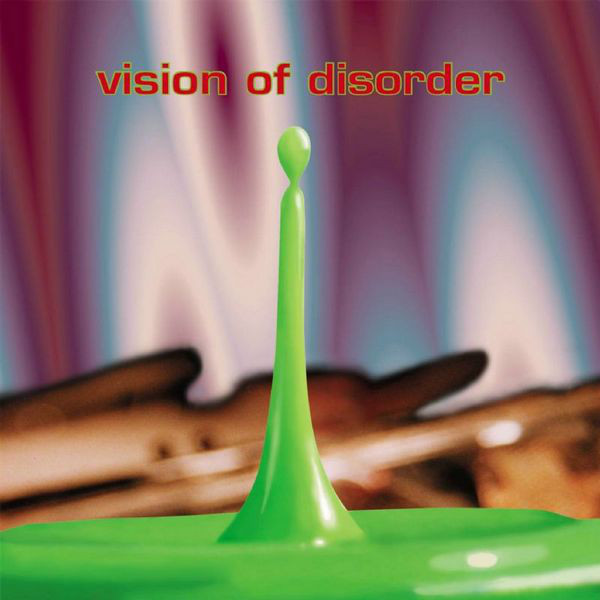
As discussed super far back in this list of mine, Vision of Disorder fans seem to be divided into two separate camps: One that passionately views Imprint as their most important work and another that prefers their 1996 self-titled. As this is much higher up on the list, you can probably figure out where I swear my allegiance.
Vision of Disorder dropped in the mid ‘90s on Roadrunner Records during a sweet spot in the transitionary period of hip hop-infused Metal and Hardcore. While this label in particular eventually helped in pushing this sound into the limelight at the close of the century, this overlooked band and record essentially made it happen. If you are familiar with Imprint but have yet to dive into this one, I should warn you it is very different as this feels more like a smorgasbord of ‘90s goodness.
The implementation of groove-laced thrash is much more hip-hop oriented here blending the classic sounds of crossover acts such as Cro-Mags with the elasticity of Biohazard mostly in the vocal and percussion performances. At points at the more melodic breaks feel equal Rage Against the Machine and Sunny Day Real Estate while remaining cohesive. While one may argue tackling so many styles at once may come off as unfocused, every unique element applied in this groundbreaking debut seamlessly converged and helped set the pieces on the board for Metalcore’s future.
22) Poison the Well–Tears from the Red (2002)
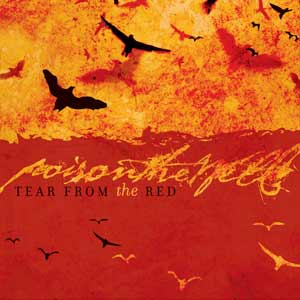
Released three years after a debut LP many consider to be one of the records that ends the conversation regarding all things Metalcore, Tears from the Red is the misunderstood younger sibling in Poison the Well’s backlog. Such is truly a pity, because I see this release as being one of the strongest early examples of how well heaviness and melody can coexist in the genre.
The overall writing contains a much more accessible approach in both Jefffrey Moreira’s vocal performance and the band’s instrumentation. The song structures follows a more linear, verse-chorus pattern than what is present on Opposite of December and utilizes clean vocals quite effectively. This much more pop-friendly version of Poison the Well disappointed many fans at the time but looking through the rearview mirror of what the genre has become presently vs. this nearly two decade old release is quite baffling.
Tears from the Red may polarize fans who militantly write off anything that isn’t Opposite of December, but this bright-sounding fusion of melody and brutality was truly revolutionary for the time and has rarely been matched.
21) Earth Crisis–Destroy the Machines (1995)
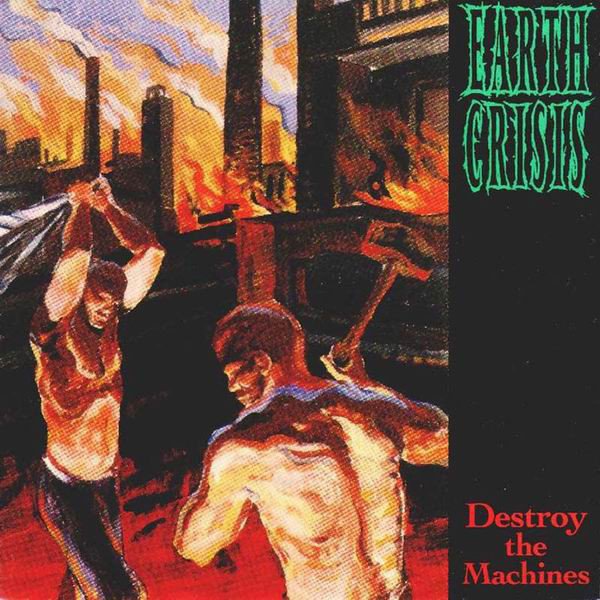
Another slice of the golden age of Victory Records, Earth Crisis’ 1995 debut LP needs no introduction. Coming off the success of the Firestorm EP, Destroy The Machines took everything the band had sonically built and pumped it full of steroids. Frontman Karl Buechner commands the listener directly with a vocal performance comparable to that of a vegan, straight edge drill instructor. Line after line, Beuchner aggressively spits educational tidbits pertaining to the genocidal misdeeds of the factory farm industry over the sweet sounds of slow, thick, caveman esque sludge guaranteed to bludgeon your eardrums with an iron hammer.
20) Ringworm–Birth Is Pain (2001)
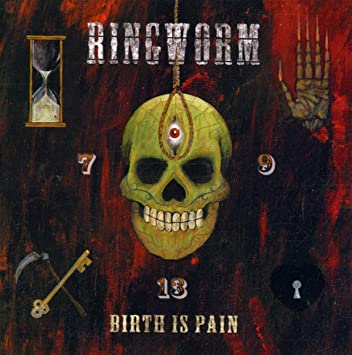
After an eight year gap following their 1993 debut The Promise, Human Furnace & the boys returned with a far more refined, focused sophomore LP. On the topic of golden age of Victory Records, Birth is Pain exemplified a purified mixture of hardcore punk and metal more well-balanced and improved than ever before. The guitarwork is fast, thrashy and functions as the ideal backdrop for the Human Furnace’s horrifying, vastly improved vocal style. Never has a stage name been so fitting, as his fire-breathing style on this record helped cement Cleveland’s reputation of only housing the most evil of hardcore bands.
19) Kiss It Goodbye-She Loves Me,She Loves Me Not (1997)

Seattle, Washington’s Kiss It Goodbye came and went in the blink of an eye as their 1997 debut on Revelation Records represents the groups only full length release. Despite the differing geographic origin, you may find the vocal performance on She Loves Me, She Loves Me Not to be extremely comparable to Tim Singer from Deadguy. Well, that’s because it is.
Formed from the remains of Rorschach, Ambush, and Deadguy, this record converges the best elements of each band and the result is a beautiful mess of noisy, defiant, anxiety. Singer adopts a Henry Rollins-esque, spoken word style improving upon his already exceptional, signature screams, that remains completely in sync with the emotions felt in the instrumentation.
There is something truly powerful and exceptional about this LP and it must be experienced firsthand.
18) Life In Your Way–Waking Giants (2008)

Snagging the torch from legendary acts such as Shai Hulud, Hopesfall, Poison the Well, and 7 Angels 7 Plagues, Connecticut’s Life In Your Way came out of nowhere with one of the strongest metalcore releases of the new millennium. Released in 2008 through Solid State Records (after a couple somewhat decent LPs that aren’t really worth mentioning by name), Waking Giants hit that nail on the head by pushing expectations of what melodic metalcore could be. The songwriting is exceptionally layered, catchy, and complex in ways that exceed the capacities of many of their influences.
While I wouldn’t necessarily strongly recommend anything in their catalog (before and after), Waking Giants depicts a band at their peak and offered something new, uplifting, and invigorating during an era when the genre had reached an undeniable plateau of innovation.
17) Shai Hulud–Hearts Once Nourished With Hope & Compassion (1997)
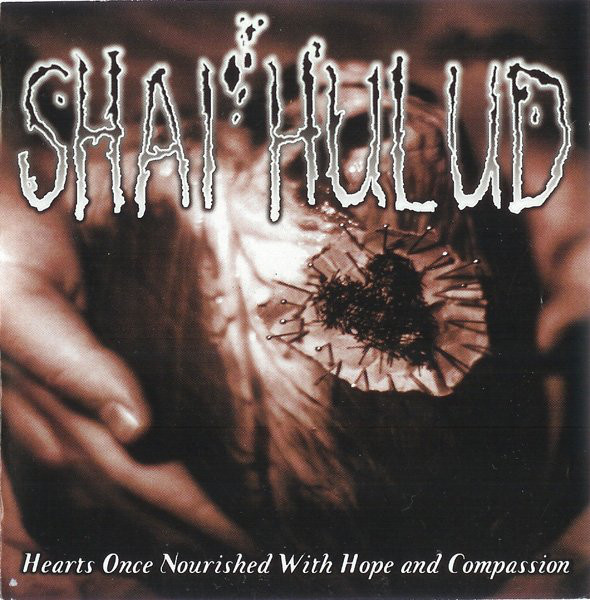
The only constant in the massive wave of line up changes encompassing Florida-based Shai Hulud‘s career is guitarist Matt Fox. Each of the band’s four LPs released over the past three decades has felt like an entirely different band with Fox’s trademark riffage serving as their sonic fulcrum. While I love all of Shai Hulud’s records for a variety of different reasons, their 1997 debut exhibits that the band’s peak moments coincide with a “less is more” approach.
Hearts Once Nourished boasts a more rhythmic, raw, and immediate application in it’s writing than their later releases. While there are many alluring leads found throughout the record’s 9 tracks, they are mostly implemented to preserve the record’s stability of fusing melody and chaos.
Before achieving fame in New Found Glory, a young Chad Gilbert delivers a passionate, furious performance full of philosophical and emotional rants. The vocals and instrumentation in Shai Hulud‘s later offerings tend to border a bit on being overly complex for the sake of it, but Hearts Once Nourished helped strike a balance that would heavily influence a whole wave of bands to come.
16) Rorshac–Protestant (1993)
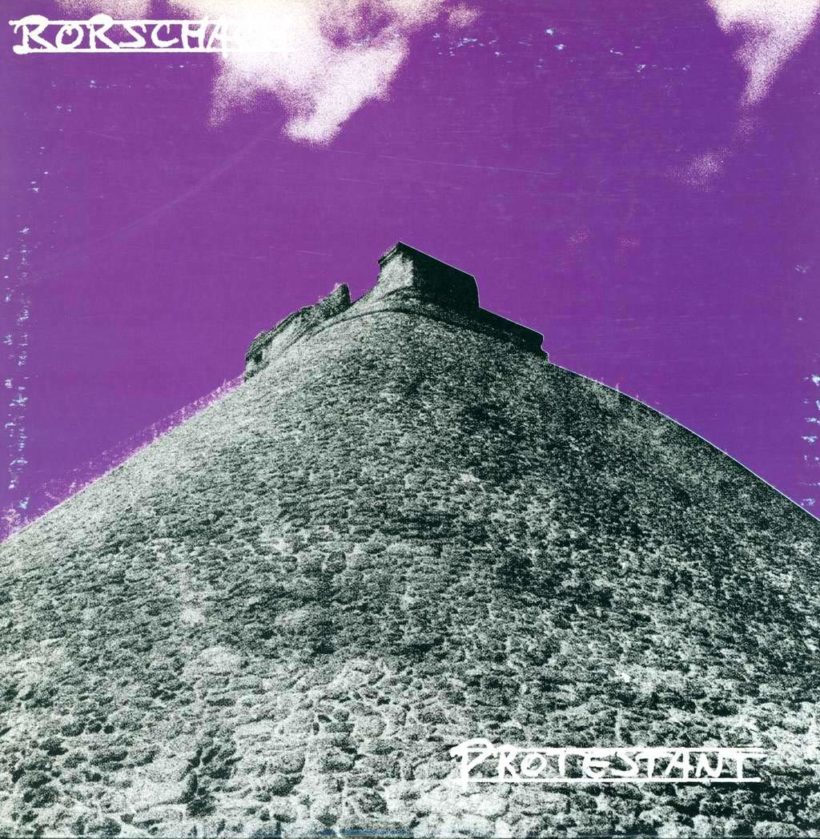
You may remember this band appearing super far back towards the beginning of this list, but just a few seconds into “Mandible” and you will likely come to two conclusions quite quickly:
- This sounds absolutely nothing like Remain Sedate.
- This sounds absolutely everything like Converge.
Converge was absolutely influenced by Rorshach and this record in particular.
While the band’s first full length, released three years prior, began to scratch the surface of what metal and hardcore combined could be, Protestant pretty much closed the book on what it could be. Vocalist Charles Maggio unleashes an out-of-left-field performance mirroring shrieks of the demonically possessed. The vocals aren’t the only thing that feels summoned from the depths of hell as the instrumentation has switched from a crusty, raw hardcore vibe to a multi-layered, noise rock, sludgefest incorporating complex time signatures and numerous elements from genres previously foreign to hardcore.
It is truly a shame Rorshac split up almost immediately following this release but it is clear their mark was left regardless. While Protestant may not ring familiar for even those heavily invested in the Metalcore genre, their influence has lived on through the many acts they inspired.
15) Between the Buried & Me–The Silent Circus (2003)
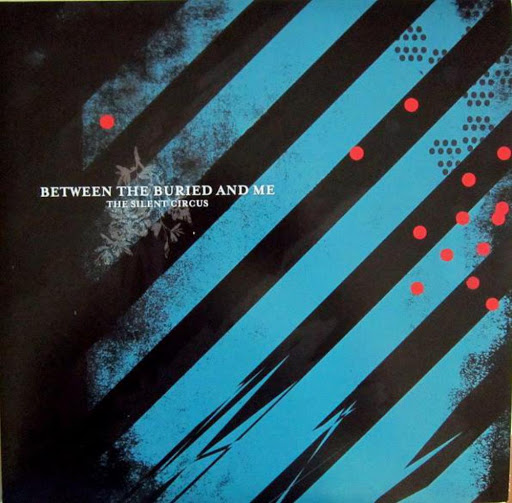
Seeing Raleigh, North Carolina’s legendary Between the Buried & Me on this list associated with Metalcore may be surprising to you, but just hear me out. Before they became what is essentially a modern incarnation of Dream Theater starting with their proggy, death metal opera Colors and even before Alaska, there was The Silent Circus.
Released during the sunset of the Victory Records golden age, BTBAM’s sophomore effort encapsulated an entirely different take on their trademarked brand of orchestrated chaos. The production here is not anywhere near as polished as Alaska onward, but such rawness allows for a candid approach towards their mastery of the craft even at the dawn of their career.
Throughout its ten tracks, The Silent Circus boasts songwriting that effortlessly flows from genre to genre free of theatrics and pretentiousness. Here we see the band at their absolute heaviest as they channel hardcore punk, grindcore, melodic death metal, and technical death metal and effortlessly transition to more melodic, bluesy breaks with mind numbing dexterity.
Whether or not this is the strongest entry in Between the Buried & Me’s catalog is a top for another day. It their only release I would comfortably defend labeling as “Metalcore”, and this record did a whole lot for pushing the genre’s boundaries at the time.
14) Botch–American Nervoso (1998)
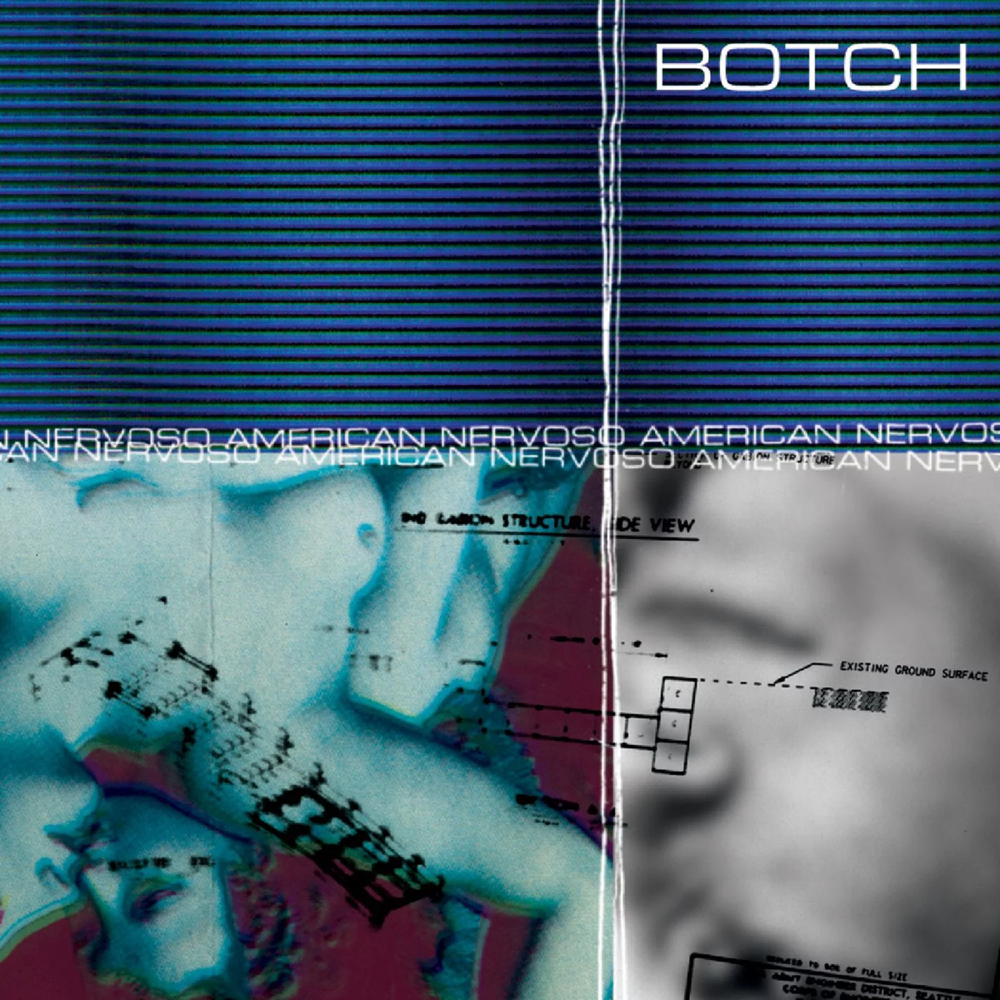
Often overlooked by its follow up, American Nervoso is a groundbreaking debut that is every bit as worthy of praise.
Tacoma, Washington’s Botch is often credited as being one of pioneers for Metalcore and (like many others on this list) originated amongst a sea of bands that viewed experimentation in Hardcore as taboo. Instrumental complexities were sparse and lyricism often encompassed political issues and pride in the drug free lifestyle. While the quartet’s full potential would not be fully realized until their opus We Are the Romans a year later, their very first LP introduced many new ideas to the table with unmatched precision.
American Nervoso featured nine powerful tracks of unorthodox songwriting and multi-layered, guitar work that illustrated new ways aggression could be properly projected through sounds. While Romans significantly expands upon the atmospheric nuances of Dave Knudson’s playing methods (later known for his work in indie rock band Minus the Bear), here he plays as if wielding a buzz saw. The spotlight is equally shared by all members and every tool equipped is used to launch a both haunting and aggressive assault on your ear drums.
American Nervoso would probably be observed by more as being an absolute classic if Botch had not immediately one-upped themselves a year later, but the fact of the matter is that this more direct approach to songwriting is much angrier and heavier than its sequel and needed to exist first. If you only know Romans, I recommend changing that immediately.
13) Starkweather–Croatoan (2005)

You may remember seeing this band’s debut Crossbearer (1992) a while back on this list, and may also be surprised to see the timestamp of the record I deem superior. One of the many distinctive qualities surrounding Starkweather is that they simply craft their art on their own terms and appear and disappear as they please.
After releasing Crossbearer and the mini LP follow up Into the Wire (1995) that contained some reworked tracks from their debut, they disappeared into whatever cave they chose to hibernate in. While the sounds of ‘90s era Starkweather were certainly innovative at the time, there’s something about their comeback record Croatoan that instantly makes their early works seem repetitive and disjointed in comparison. The decade-long slumber clearly worked in the band’s favor as every single element put forth in previous albums has been largely focused and improved.
From the moment “Slither” begins (despite this song being present on Into the Wire…sort of?) it becomes very clear that vocalist Rennie Resmini spent most of his off time performing demonic rituals for guidance because he sounds far more evil and far less dated than ever before. He proves yet again that the relationship between clean and screaming vocals is not necessarily a juxtaposition of ugly vs. pretty as every line shrieked, growled, and sung is equally ugly and discordant in the best way.
Longtime guitarist Todd Forkin steps away from redundant thrash riffs in his compositions and instead applies layers of crushing, atmospheric movements seemingly influenced by Swans, Godflesh, or Neurosis. In the same way Converge took cues from Starkweather’s early works, songs like “Machine Rhythm Confessional” bring things full circle with much faster, death metal-influenced passages and pounding double bass.
While I love all Starkweather, Croatoan exhibits unmatched focus, precision, and production that seems to perfectly encapsulate the band’s original vision in the early ‘90s that they may just have not had access to the correct tools to achieve fully. I would not say it’s necessarily the band’s most accessible work (as every release by this band requires patience to click), but understanding what they were trying to achieve in their genesis is easiest when you start with this one.
12) Integrity–Humanity is the Devil (1996)

It has been often debated if Humanity is the Devil falls under the category of mini LP or EP. In an effort to maintain cohesiveness, I previously tried to simplify this already massive list by honing in on LPs only, but this 1996 classic cannot be left out of the conversation so classify as you will.
After both starting and ending the conversation of how metal and hardcore punk can be impeccably intertwined with their 1991 debut Those Who Fear Tomorrow, a four year gap preceded their evolved sophomore effort Systems Overload. Less than a year later, the Cleveland ensemble released what is often observed as their defining opus.
Combining the more traditional song structure of their debut with the bizarre nuances of their sophomore, Humanity exemplified a more adrenaline-fueled, balanced roller coaster ride of a listen. The punk sections were faster with more intensity, the slower sludge movements were both more melodic and crushing, and the usage of eerie, ambient sampling were applied fully to encompass the record’s closer. There’s something about this release that felt more calculated and destructive. Similar to the writing maturation demonstrated by Coalesce, this shorter list of tracks made way for stronger, stand out compositions that annihilate everything in its path in roughly a dozen minutes before leaving listeners contemplating the aftermath in their spine-chilling mammoth of a closer.
Chances are, if you know Integrity, you already know how important this release is.
11) Disembodied–Heretic (1999)

Often overshadowed by its previously discussed predecessor, Heretic was a brilliant sophomore offering sadly cemented as a swan song that fell upon deaf ears. The Minneapolis based quintet showed dramatic strides in production and writing between their 1997 debut Diablerie and their 1998 7” If God Only Knew the Rest Were Dead, and Heretic closed the chapter on the highest note possible.
In many ways, Disembodied’s final release before their eventual hibernation felt like a re-do. There are very familiar moments found throughout the album’s ten tracks (compare “7 Stitches” to “Anvil Chandelier”), but the overall structure of their songwriting and the way sounds were captured seem to fit the band’s vision with recharged coherence. The guitars are thunderous and groovy, the drums carry an explosive weight not previously captured, the vocals actually match the powerful presence of the rest of the presentation.
I may be in the minority here as I do truly love Diablerie, but Heretic offers an entire listening experience that fixes every blemish found in their rearview mirror at that point. Each song here serves a purpose and conveys its message in a much more concise and powerful way as the writing is far less repetitive and the production is much less tinny and forced. If you love Disembodied, but have managed to sleep on this record as so many of my peers have, you are simply missing out on their peak.
10) 7 Angels 7 Plagues–Jhazmyne’s Lullaby (2001)

One of the more difficult aspects of crafting a list of this size is reaching the final ten entries and realizing the irony of having less to write about. That is because so many previously mentioned records on this list crafted their own attempt at what Jhazmyne’s Lullaby perfected. Albums such as Hearts Once Nourished (Shai Hulud), Frailty of Words (Hopesfall), or Waking Giants (Life In Your Way), provided similar brands of melody-infused, calculated ferocity but nothing quite like this.
Often observed as a spiritual prequel (or stylistic template of sorts) to Misery Signals, the Milwaukee based collective 7 Angels 7 Plagues made their presence known with a milestone metalcore masterpiece and faded into the night as quickly as they had started. From its ashes, Misery Signals was formed and continued to push the genre’s boundaries, but they never quite surpassed what was done here.
Armed with the same love for jazz-influenced, melodic math metal featured on Of Malice and the Magnum Heart, this debut LP channeled a “less is more” approach comparatively. Complex instrumental precision is used sparsely but functions more effectively in context than the often overused flaunting present in Malice. Song structures are cemented by traversing between clobbering breakdowns and ariose segues and each of its nine tracks stand out and serve a functioning purpose for the overall flow of the record. The meticulousness of Jhazmyne’s Lullaby extends to even its instrumental interludes. “This Afternoon” serves as a stunning intermission employing beautiful, harmonizing classical style guitar work and wastes zero time in doing so.
I tend to approach my most cherished metalcore releases on this list as being a thrill ride similar to riding a roller coaster, but this record is just simply a flawless work of art that needs to be listened to by anyone and everyone.
09) Killswitch Engage-Alive or Just Breathing (2002)
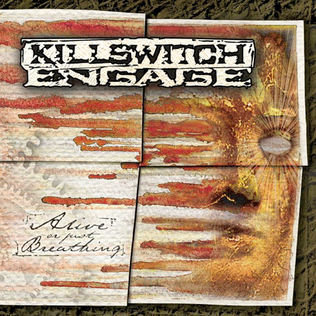
We have discussed in numerous entries throughout that follow a specific trend fusing melody with heaviness. Similar to Life In Your Way’s Waking Giants and Poison the Well’s Tears from the Red, Massachusetts legends Killswitch Engage nailed the formula through both their harmonizing guitar work and vocal performance with their sophomore LP Alive or Just Breathing.
Born from the ashes of some already notable pioneers of the genre such as Aftershock and Overcast (and technically Blood Has Been Shed if you count their future lineup), Killswitch helped to usher in the more mainstream wave of Metalcore. This wave mostly consisted of American bands that would spend most of their time recycling riffs from Slaughter of the Soul and some would go on to attempt this with more success than others (I’m of course talking about Unearth, As I Lay Dying, All That Remains, and so on).
Alive or Just Breathing illuminated the perfect sweet spot between abrasive rage, passion, and allurement; specifically through the powerful execution of frontman Jesse Leach’s screams and cleans. Like Underoath, Killswitch’s fanbase has a strong reputation for division based on vocalist preference. While I do not believe there is a right or wrong answer in the Howard vs. Jesse department, I can confidently proclaim that the Western Mass-based quintet has never put forth a record with songwriting as strong as this one from start to finish.
08) The Dillinger Escape Plan–Calculating Infinity (1999)
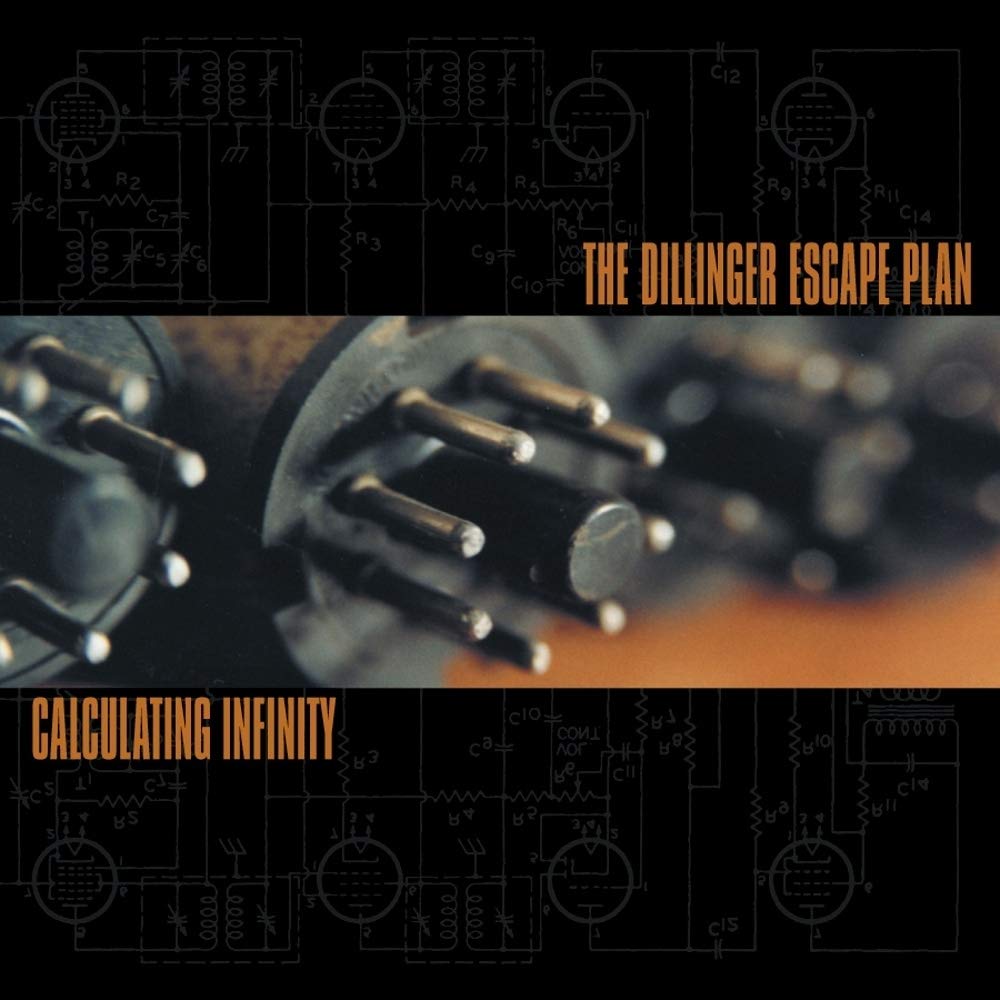
I have spoken on more than one occasion here in regards to various acts known for implementing mind-blowing, mathematical complexities to their writing throughout the genre’s history. In 1999, New Jersey’s acclaimed “Mathcore” pioneers The Dillinger Escape Plan took the scene by storm with a debut LP that completely shut the book on this concept.
Recorded straight to tape, it is baffling that Calculating Infinity was written and performed by human beings capable of error. While at this time bands like Botch or Converge had already showcased imposing skill sets pertaining to this style, Dillinger demonstrated godlike precision to their jazz and grindcore influenced sonic assault on their debut LP.
While this record may demand a more specific mood and level of attention than Miss Machine and some of their later, (somewhat) more accessible offerings, Calculating Infinity absolutely changed the potential of Metalcore’s sonic landscape. The lightning fast, sporadic, bludgeoning performance from all members (especially drummer Chris Pennie) illustrates a pure chaotic assault often mimicked but never matched by newer bands to this day.
07) Candiria–300 Percent Density (2001)
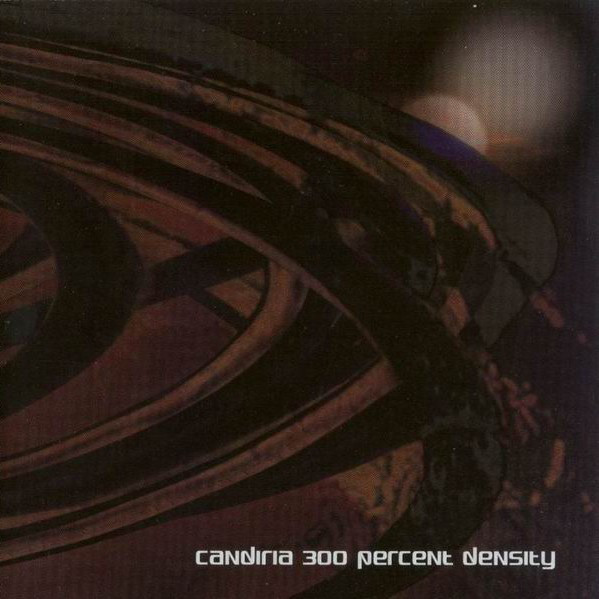
From the streets of Brooklyn, Candiria’s method of expression has always been a vibrant, colorful melting pot of genres. After releasing a trilogy of LPs in the 90’s that managed to somehow successfully blend Progressive Death Metal with Jazz Fusion and Hip Hop, the five piece got their big break with their major label debut (and fourth proper LP overall) 300 Percent Density.
While it may not contain the same theatrical flair and assortment of sounds when stacked against their previous works, 300 Percent Density displayed the most focused songwriting of the band’s career. Abandoning the more extreme metallic influences, Candiria introduced a more direct combination of the New York Hardcore sound with a more refined version of what mainstream metal acts like Slipknot and Mudvayne were doing at the time.
Throughout its hour run time, the record presents effortless shifts between sonic assaults in the form of complex, jazz-influenced math metal and funky, fusion breaks. Hip Hop influences are an additional dominant force as frontman Carley Coma resumes the tradition of both rapping and growling the sincerity encapsulating his lyricism.
While Density may not be ranked amongst the greats as often as it should, it provides the same technical mastery of instrumental skill and genius songwriting associated with Calculating Infinity or The Silent Circus, but in a way that takes itself far less seriously. It manages to be so many things at once in the best way possible and deserves a spot on your all time list as well without question.
06) Converge–Jane Doe (2001)
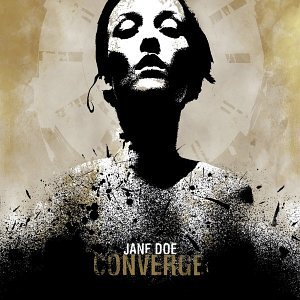
If you managed to make it this far, I present to you the hottest take this list has to offer: this isn’t #1!
While Jane Doe is undoubtedly Converge‘s best record and marked the birth and foundation of the lineup that has remained intact a full two decades later, it is not necessarily my favorite offering from the Boston-based quartet (more on that VERY soon).
There’s not much I can write about this album that you haven’t already heard or read from literally everyone and their mother that writes about heavy music, but I can say it’s veracity and unique production rightfully earned its spot as a landmark classic for many. The incoherent shrieks of frontman Jacob Bannon are weaponized as they plunge through the waves of ferocious guitar work and scrupulous, eruptive drum fills. On later Converge records, Bannon wears his heart on his sleeves and explosively recites his poetry peaking over the mix but here his vocal chords add just as much horror and insanity to Jane Doe as the instruments played.
The quartet’s third proper LP (Petitioning the Empty Sky is an EP, sorry) deserves every bit of attention and praise it has received as their magnum opus and the supportive pillar for the genre’s continued existence. As the 90’s wave of metallic hardcore acts were beginning to thin out, Jane Doe showed a band pushing boundaries and delivered listeners a front to back experience-not just something to mosh to.
05) Coalesce–0:12 Revolution in Just Listening (1999)
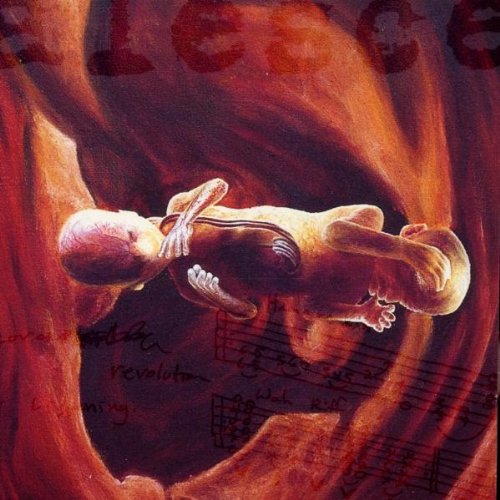
In an unintentionally comical juxtaposition in how all of these albums were ranked by number, Revolution is in a sense the complete opposite of Jane Doe when you know the backstory. While the Converge opus gives off the impression of a delicately crafted masterpiece, legend has it Coalesce banged out the writing and recording of their third LP in the span of a week’s time.
The story passed down (I believe I read it in Decibel Magazine years back) details the band’s swift decision to call it quits after their van broke down in Idaho smackdab in the middle of a cross country tour. Because they had already received an advanced check from Relapse Records to record their third LP, guitarist Jes Steineger wrote all of his parts on an acoustic guitar over the span of three days, and the record was produced over the course of three more. Despite the laid back, “let’s-get-this-over-with” approach in its blueprint, 0:12 Revolution in Just Listening is every bit as important as Jane Doe.
Just as there was a notable jump in quality from Give Them Rope to Functioning on Impatience, the last entry of the trilogy finds Coalesce at their absolute peak as they display an unmatched mastery to their formula. Its brief, 20 minute run time accomplishes much as it mixes southern-soaked sludge metal with unconventional time signatures and toe tapping groove. On and off stage, Coalesce has never really been the type of band to take themselves seriously and a true testament to their legacy is how they somehow managed to craft an accidental masterpiece when all pressure was removed.
04) Poison the Well–Opposite of December (1999)

Before Underoath, Killswitch Engage, skycamefalling, or From Autumn to Ashes, there was Opposite of December. Released at the turn of the century through Trustkill Records, the debut LP from Florida’s legendary Poison the Well turned metalcore on its side by proving it’s okay to cry.
Opener “12/23/93” immediately bludgeons the listener’s eardrums and manages to use the attention-grabbing moment to reel them for the remaining eight songs to follow. Every track here is deeply nuanced and incorporates a wide spectrum of intense emotions with each instrument beckoning the call of Jeffrey Moreira’s powerful and commanding vocal presence. Pulverizing guitarwork serves as the backdrop of Moreira’s most rage-filled moments and alluring, pristine breaks assist his angst-fueled spoken word sections.
To this day, very few records have boasted the organic fluidity of tormented, angsty passion like Poison the Well did here. Most of their immediate imitators have to be viewed through a nostalgic lens to be enjoyed, but Opposite remains an ageless classic two full decades later.
03) Integrity–Those Who Fear Tomorrow (1991)
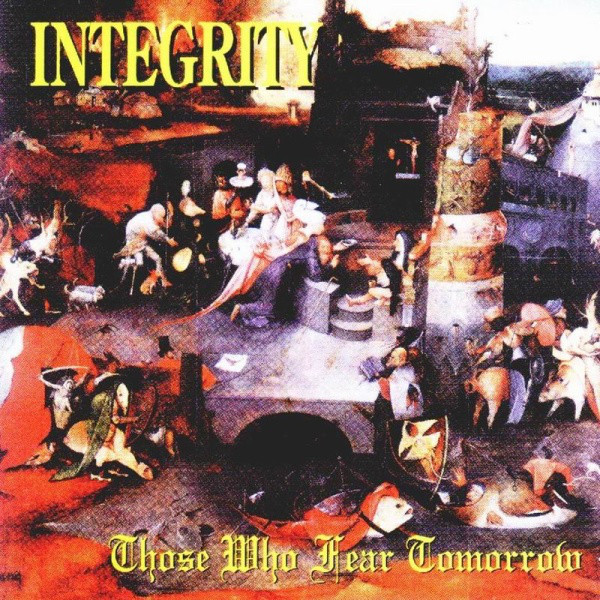
While Dwid Hellion would undoubtedly hysterically laugh at the label, here we have what (is my opinion) the very first proper “Metalcore” album ever made. While metallic influences were not necessarily foreign to the soundscapes of hardcore by the start of the ‘90s (Cro-Mags, Suicidal Tendencies, Leeway, Corrosion of Comformity), Those Who Fear Tomorrow was the first LP to strike a perfect balance and set a precedent for waves of bands also recognized as pioneers including Hatebreed, All Out War and Earth Crisis.
While Dwid and company would continue to push the boundaries of their sound further and further throughout the remainder of the decade (see other two Integrity records mentioned in this list), the impression of their original formula seen here leads me to hold this one up in the highest regard. Traditional NYHC strong structures are met with warp speed leads and an overall malevolent presence not yet seen in hardcore circles.
Born out of an era of hardcore where lyricism mostly dealt with maintaining a straight edge lifestyle or political activism, Integrity crawled from the depths of hell and demonstrated a brand of hardcore that relied on a sharp metallic edge and the unorthodox personalities of their frontman to convey its message of apolocalyptic poetry. Hellion’s tendencies to sabotage the band’s reputation (for seemingly no reason other than his own amusement) may be the one thing preventing the group from being recognized as Metalcore’s Godfathers from a more mainstream eye, but there is no denying that Those Who Fear Tomorrow has aged incredibly well. Despite being 30 years old, Integrity’s debut feels just as modern now and manages to contain zero dull moments in spite of boasting an unconventionally lengthy 15 tracks.
02) Botch–We Are the Romans (1999)
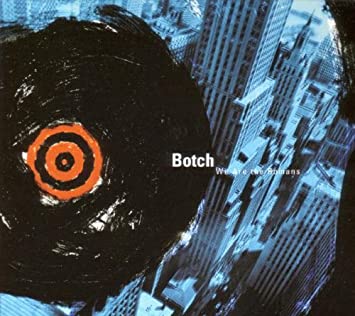
One year after the delivery of American Nervoso, Tacoma, Washington’s Botch unleashed their second and final full length LP that since has cemented into history as being one of the highest points heavy music has to offer. With such a tiny gap of time between these entries, it is simply mind blowing how different the artistic objectives appear to be between the two. The quartet’s debut summoned a sonic assault comparable to the likes of Converge or Dillinger Escape Plan and We Are The Romans exemplified them quickly circling back with a more refined, auditory experience. Instead of providing a pure adrenaline rush with few breaks, this more mature rendition of Botch found them implementing their skill sets at a more varied capacity.
The most notable and exceptional change to the group’s sound can be found through the guitar playing style of Dave Knudson (known mostly for his work with Minus the Bear after Botch split in 2002). The ear-grating, buzzsaw riffage remains ever present but finds a favor in atmospheric segues traversing a vast array of uncharted audible terrain. Fitting right in with their Hydra Head neighbors, Botch’s sophomore effort channels the ambience of Post Metal in assisting the flow of each track and cleverly uses this tactic to build up their most explosively heavy moments.
We Are The Romans may not contain the same level of heaviness as their debut, but it contains their most strong, clever, and cohesive collection of songs that helped to pioneer a sound that has continued to shift and mold through the decades to follow.
01) Converge–When Forever Comes Crashing (1998)
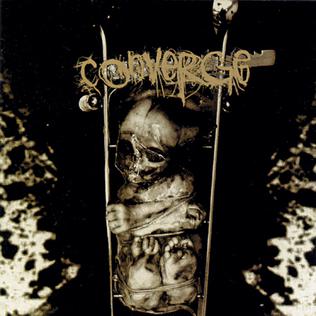
For those of you that actually made it this far, thank you. This list here took me roughly nine months to compile then write and it is a very fulfilling thing to be able to close the chapter on this experience. For those that just scrolled through all sixty albums just so see what ranked as number one, I still thank you. I understand that sixty is a very ambitious number for a single genre written by a single person. I originally planned twenty-five, but I got attached to way too many records during this experiment and had too much to say.
I mentioned a few entries back that Jane Doe was the best Converge album but not necessarily my favorite, and this rings true here. When Forever Comes Crashing is not only my favorite Converge record, it’s my favorite Metalcore record period. I absolutely acknowledge I have the minority opinion here, but have the decency to hear me out considering this entire experiment was built around my opinion in the first place.
Jane Doe established an entirely new era for Converge and helped solidify the lineup they have maintained ever since. While it was guitarist Aaron Dalbec’s “swan song” with the group before switching his priorities over to Bane full time, it introduced drummer Ben Koller and bassist/vocalist Nate Netwon who cemented themselves into the lineup permanently and became a 50% contribution to the sounds of Converge as we know them today. This is the reason I imagine the quartet undoubtedly disowned all the material prior to the 2001 opus, often laughing and rolling their eyes when audiences request live performances of that era. It’s a shame really. When Forever Comes Crashing may not have been the most ambitious, grandiose, experimental entry in the group’s catalogue, but it was the most solid, audible time capsule of what I deem as metlacore’s greatest decade: the ‘90s.
Following up their 1996 EP Petitioning the Empty Sky (often regarded as a full length, but referred to the band themselves as a compilation of older material), the group’s sophomore LP served as a cauldron for all of Metalcore’s best aspects at the time. The most apparent influence upon diving into the first few tracks is Protestant era Rorshach but further examination finds a much more unorthodox compositional framework with numerous odd time signature shifts scattered throughout akin to Calculating Infinity. Shifting away from the more direct approach of early Starkweather influenced thrashy hardcore explored in Halo in a Haystack and Petitioning, Crashing illustrates an untamed chaos sporadically bursting into grindcore influenced blastbeats and effortlessly conjuring Godflesh-like, mammothy riffs to pound its listeners into submission.
While When Forever Comes Crashing may be void of Koller and Newton, it still featured a notable lineup of ‘90s era Boston Metalcore glory as Stephen Brodsky performed bass duties during the Until Your Heart Stops era of Cave In. The official Converge brand would expand to become its own thing more and more in passing years leaving Crashing to collect dust in its respective era, but that doesn’t take away from this record’s importance. It is unlikely I will ever get to experience “Concubine”, “Towing Jehovah”, or the title track in any sort of live setting, but I can throw it on a turntable and experience this glorious ‘90s metalcore classic whenever I desire.
Thank you for reading and feel free to experience your harsh disagreements in whatever way you see fit.
